-
Posts
1,719 -
Joined
-
Days Won
419
Posts posted by Kevin von Duuglas-Ittu
-
-
The Habitus and the Living Recording
There is another very interesting aspect to Sylvie's prolific fighting and training in Thailand, and that if of a living, "carnal sociology" of Muay Thai itself. One of the somewhat unstated implications of Bourdieu's concepts of habitus & hexis is the notion that our bodies become living inscription surfaces. Written on our nervous systems and in our brains is a "record" of what is, the milieus we have lived in, and strained ourselves in. In just a blunt way Sylvie's bodied record of the Muay Thai of Thailand (in kaimuay, as discussed above), and in fight milieus is in many ways unparalleled. What follows briefly is going to sound a bit like championing her, which I do as her husband, but the raw fact is that she's a unicorn in the fight-ethnographer world. She has embodied the fight milieu of Thailand, it's great variety, more often than any western man or woman with over 250 fights in the country, far outstripping very serious others. But, she also has been an informal ethnographer of Muay Thai itself. Aside from her personal writing and note-taking over the last 9 years, more than 1,000 articles written on her site, many of them in very specific subjects like the Gendered Experience in Muay Thai in Thailand, itself a prolific assemblage of personal documentation perhaps more voluminous than any other fighter in history, she also has produced the massive Muay Thai Library documentary project, an archive of over 120 hours of video commentary preservation of the techniques of legendary fighters and great krus throughout Thailand, under the view that these are disappearing fighting forms, fighting habitus that no longer are being transmitted to future generations. The Muay Thai Library project is a treasure trove of historical documentation, likely the most detailed and comprehensive of any martial or fighting art history. While fighting more prolifically than any western man or woman in Thailand, she also has been producing documentation like no other. This creates an incredibly rich inscription upon her person, something we may not think seriously about as a subject of study for decades.
Archive vs Repertoire
Here though, I want to bring in Diana Taylor's idea of the difference between an "archive" and a "repertoire", with the repertoire being a parallel, living history to any material history. Sylvie's Muay Thai Library project no doubt is an archive, but her experiences in creating the archive also have produce a repertoire, a living recording. Citing from:
"Pierre Bourdieu: Issues of Embodiment and Authenticity" by Herman Roodenburg (2004)
On one level, just becoming the student of so many legendary fighters, under the conditions of producing the archive, alone might produce the effects of a repertoire recording, but it is much more than that. She, as the most prolific fighter (possibly in the world), has been creating this archive all in the context of actual fighting, at an incredible rate, developing herself as a fighter. She is processing her studies through the field of fighting and the field of the kaimuay, integrating them into the living matter of her own habitus. She herself, is a living encyclopedia of traces, that is parallel to the material archive itself. In the history of ethnographies these types of integrations, at this volume, are likely extremely rare. She has been archiving the embodied histories of the art and sport, while performing the art itself at elite level.
What is perhaps most interesting is that a great deal of her attention has been directed towards all the differences in energy and ruup, found not only in each fighting style, but more importantly, in the complete uniqueness of the great fighters that she has studied and documented. Video is used to record them in full length hours, so to capture as much of their habitus as possible. Not just their techniques (which is the preoccupation of much of the West, as it seeks to raid the Muay Thai technical cupboard for its efficacy), but the ways of talking, the postures between and during explanation, the nature of exhortations, the facial displaces of judgement. Her - and my - theory has always been that each legendary fighter or kru has a muay that is embodied in them, and you cannot know the technique without knowing as much of their person as possible. She has been noting this, and maybe more importantly experiencing this, for several years now. You can watch a video of Dieselnoi, but until you stand in front of him you cannot really feel the energy, the comportment. You cannot take it onto yourself as a trace.
To take a more concrete, less unconscious example: Dieselnoi, in teaching, has a very distinct demand of how to return to your corner after a fight round. This is also how you rest after a hard round of training. It has a very specific ruup. An elevation of the posture, a way of breathing, which for him communicates vitality, but also expresses the very elan of his fighting style, which is like no other in Thai history. You can learn this if you train with him. It can consciously be taken on as a repetition and trace, but more so, if you spend time with him the entire habitus of his disposition as a fighter will become imprinted, far beyond this breathing part of his repertoire.
Remarkably, Sylvie has taken on these traces, in person, with some of the greatest fighters and krus in Thai history. Her own habitus is imbued with the shaping forces of these exposures, many of them coming through friendships that have lasted for years. In all that she does, her habitus has become a repertoire preservation - however pale or distinct - for rare habitus of Thailand's Muay Thai, not only in the ring, but in the culture of the ring as well.
-
Habitus & Hexis vs Overt Instruction in Thailand's Muay Thai
Anecdotally, showing aspects of disposition that unconsciously are communicated in Muay Thai training, these are three examples of the positioning of the subject as nak muay in non-technical (mechanical) sense. These may feel like subtle, and even quite minor aspects, but habitus inculcation is filled with a myriad of these, across all domains.
1. The wai - Lanna Muay Thai was Sylvie's first gym in Thailand. It wasn't so much an authentic Thai kaimuay, as it was opened by pioneering westerner Andy Thomson and had a history of being a home for sincere, long-term western fighters. It was an integrated western/Thai hybrid space that importantly did raise Thai boys up to become ring fighters, and in many respects maintained very distinct Thai elements. In fact, it was probably the last western-friendly gym in all of Thailand that maintained a separate ring, only for men under the superstitions and bias against female gender, a ring separation of genders I wrote about here: So What’s the Big Deal About Women and the Bottom Rope In Thailand? (There is a lot that can be said about habitus and that ring, I suspect.) Andy was an innovator, but the gym itself was left to be run by Thais, building a few Thai fighters, and training westerners in a more or less "Thai way". There were still strong Thai habitus qualities within the gym when we spent our 2 years there. This story is about how the mother of Chopper, a teen Thai fighter from Isaan who had transplanted to Lanna Muay Thai in Chiang Mai. In a slight digression, Lanna Muay Thai had another name, a Thai name: Kiatbusa. These two names might very well represent two differing habitus that overlapped, a western-oriented one, and the Thai one. In any case Chopper was quite skilled from his Isaan experiences, and he became a sparring partner with Sylvie due to size. Chopper's mother was working class. She was a tuk tuk driver in Chiang Mai, and she was friendly with Sylvie when she would come and pick Chopper up. One day, as I remember it, she pulled Sylvie aside to tell her that she was wai-ing wrong for a woman. She explained to her that it was not lady-like how Sylvie wai-ed, and it was not especially polite. Sylvie had been in the gym training full-time for at least a year or more, I suspect, and had spent a lot of time with the Thai boys she trained against and with. And she had learned wai-ing from all the examples around her. She likely practiced how to wai when she first came to Thailand, with perhaps examples from YouTube even, but she actually, unconsciously, learned how to wai from watching all the teen age boys wai. Whereas Chopper's mother showed her that a woman properly wais with the hands together about chest level, and the head lowering the chin, forehead to the hands, Sylvie wai-ed by placing her hands over her nose, with a little casual nod. We have joked that it was a bit like blowing your nose into a handkerchief.
Chopper's mother was in particular concerned with Sylvie's actions as a woman. A proper woman. It was jarring to see her wai like a teenage boy. None of this was on purpose, none of this was conscious choice. I'd add that Sylvie had also picked up a series of grunts and vocal delays from Nuk, one of the old time trainers who talked in an exaggerated way, often grunting in approval to something he heard or saw. She wai'ed like a teenage boy, and talked at times like a grizzled padman. She had absorbed these behavioral qualities, these modes of expression and disposition, mimetically.
This is only to point out, the habitus of the gym was constantly inscribing itself on Sylvie, and a large measure of this was unconscious. It's the fabric of dispositions out of which Muay Thai technique and aesthetics grow. It was not two things, but it was a 100 things. A 1,000 things, that dispositionally transferred themselves to her. It's a kind of sculpting of disposition that works itself down to gestures of respect and ways of speaking. As a female training and fighting seriously in Thailand, this necessarily is an adoption of a project of hyper-masculinity...because Muay Thai is a Thai hyper-masculine performance. This cannot really be done without the grafting of any number of supportive dispositions. In Thailand, head position, and head-lowering is extremely important, and is divided by genders. In Thai scoring you learn, technically, never to lower your head (without direct purpose). This is powerful sign of masculinity itself, both in and out of the ring.
2. Calling points. Thailand's form of sparring is quite different from that of the West, speaking very broadly, especially when sparring as a boy. The overriding quality of sparring can be play and experimentation (and not "properly" executing techniques). It is a sandbox of learning to perform, with your whole body, and all the signification of affects that play a role in Thai scoring. Mimetically you absorb behaviors and dispositions from others in the ring. It isn't just techniques that are passed between fighters, it's ways of being, a sense of the game. Every gym will develop its own style of comportment. It develops not only out of the styles of the krus, which work to enforce their own sense of what is aesthetically pleasing or proper, but also from the personalities of all the fighters. It's a melting pot of influences and creation. In the gyms Sylvie has been in calling out your own points plays a huge part of sparring. You learn the theatre of dramaticizing your scores in various ways. This goes to a larger principle of never showing that an opponent has an advantage. You learn to ignore and shrug off anything done to you, and celebrate, or at least indicate all your points. It can be anything from a subtle posture change or smile, to shouting out "ooooi" or some humorous comment in Thai. This can be a very jocular form of training, but it is extremely important to a Nak Muay's performance in the stadia.
Sylvie saw this pretty early on, point calling in the gyms she had been in. It's part of the game as much as slamming down a domino might be in dominos. She just could not do it. The way she was raised, as a girl, in her house...but in a wider degree in her culture, was that a woman should never call attention to herself. The habitus of the West, and of her home directly contradicted what was required to play at sparring in her gym. Years passed, it was not possible. The inscriptions of the habitus of the Thai kaimuay were in conflict with those of her history. We are not exactly sure when they changed. There were some conscious attempts to do it, almost to force it, but they were unsuccessful. It was just a matter of spending more time in the water. At some point, several years in, calling points emerged. In fact, Sylvie has a really wicked sense of humor, an incredible playfulness she would not ever show when attempting to accomplish a task, for instance, that started showing through. Eventually, through no actual conscious change, she has become the loudest one in the gym. And, when she goes to other gyms and spars or clinches with Thai boys - something that can be quite stressful for the Thai boy, because he's on stage vs a female - it's her cackling, and joking and point calling that breaks all the ice between them, and allows the boy to call his own points, make his own play. Which is the "real" Sylvie? The quiet, nose-to-the-grindstone girl who would never call attention to herself, or the boisterous, cackling, joke-teller who brings light to the training ring? Each was created by a habitus. A different habitus. Each feels "natural" and a "real you". Perhaps it would be best to say that the habitus of each draws out the potentialities of a person, each equally real. In this case the latter is part of the inscription of hypermasculinity as portrayed by a nak muay, at least in the training circumstances she was in --- there are quiet, non-celebratory Thai nak muay too.
3. Music. One of the most difficult things to learn in Thailand's Muay Thai is the music of its rhythms. Not only do differing styles and krus have differing musics, but the Western ear for fight performance is far out of whack of almost everything a Thai fighter expresses. Westerners will hear things like "relax" (sabai) or "tamachat" (be natural) and have very little access to what these things actually mean. A foreigner can try to approximate the rhythms they see around them, and many of them do. But, this is conscious imitation, and honestly quite far from what these expressions actually are. Many times they are poor copies. One of these principles is "don't rush" (mai don reep). Sylvie knew this principle conceptually, and even in conscious practice, but she never really "got" it. Not the feeling of it. It's about a quality of tempo. You can face a lesson many times, until it finally hits you in the right way, and for Sylvie it was in the Muay Thai Library documentary session with Kru Khorat: #39 Khorat Saknarin - Precise Tensions (97 min) watch it here . For whatever reason, when Kru Khorat told her to stop, pause, take a beat, it sunk in from all that she had experienced before this. This musical, tempo'd aspect of the meter of beats in striking is connected to the Thai principle of making strikes visibly clear, distinct. Not "muddy Muay Thai" (muay mua). This a non-technical (mechanical), highly aesthetic, but still efficacious dimension of Muay Thai. It's something that Sylvie is growing into. In this clip of sparring below, you can see the pause in the beats, resisting the urge to rush through advantage as you build a momentum of effect, demonstrating/indicating control over the space, as well as the playfulness:
The nature of pauses or regularity, not rushing strikes is a groundwork of much larger musicalities in Muay Thai styles. Great fighters like Karuaht, with whom Sylvie has studied over many years, was practically a symphony of musical effects, delays and advances. You can try to learn these as part of the form of techniques, for instance the built in delay, as the chest rises up in Karuhat's Golden Kick, as he teaches here:
But the more germane aspect of this sub-article are all the unconscious ways the musicality of Thailand's Muay Thai come to be communicated to you in the training environment, the habitus of a kaimuay. Among these things are very small things like learning to delay, to wait, between a single strike and another. These are motor-schema inscriptions that develop unconsciously, though conscious direction and conceptual understanding can be a part of (or a prevention of) acquiring them.
I also reference this small bit of habitus/hexis differences between race, gender and ethnicies. I don't know if this study has been discredited or reargued, but it's a famous case of misunderstanding between races in the West. White teachers take direct eye-contact from a student as a sign of submission, attention and respect, whereas in some black culture, a subordinate student would not make direct eye contact. One person, under the habitus of their inscription is showing respect, but it is being read as disrespect in the habitus of their inscription. These are the types of dispositional knowledge and expression we are talking about, experiential signification of the Self. And these are the things which can and do undergo change in the rigors of Thai's kaimuay.
The Five Vital Signs of Conversation: Address, Self-Disclosure, Seating, Eye-Contact, and Touch (Berkeley Insights in Linguistics and Semiotics) by Norman Markel | Jul 28, 2009
-
 1
1
-
-
Doxa and The Fighting Arts
It may seem a bit of a stretch to imagine that cosmologies can be unanchored, and anchored, through motor schema rigor, and exposure to training subculture habitus. But interestingly enough there is ethnological discussion in just this direction. "In Practice Without Theory: a neuroanthropological perspective on embodied learning" by Greg Downey, in the same anthology, Embodied knowledge theory is used to investigate the teaching of the Brazilian fighting art Capoeira. After the author describes the development of "kinasethetic style", through largely non-verbal instruction and more important mimetic accumulation, "forms of moving and gesture, and habits across all practical, linguistic, and cultural obstacles" (notably, this study seemed to be of transmission of the art not in the authenticity of the strucured habitus of Brazil, but in New York), the Capoeira player comes to acquire malicia, in a sense of the game, which is a vision or outlook upon the world, which flows from the social conditions under which Capoeira developed:
On malicia:
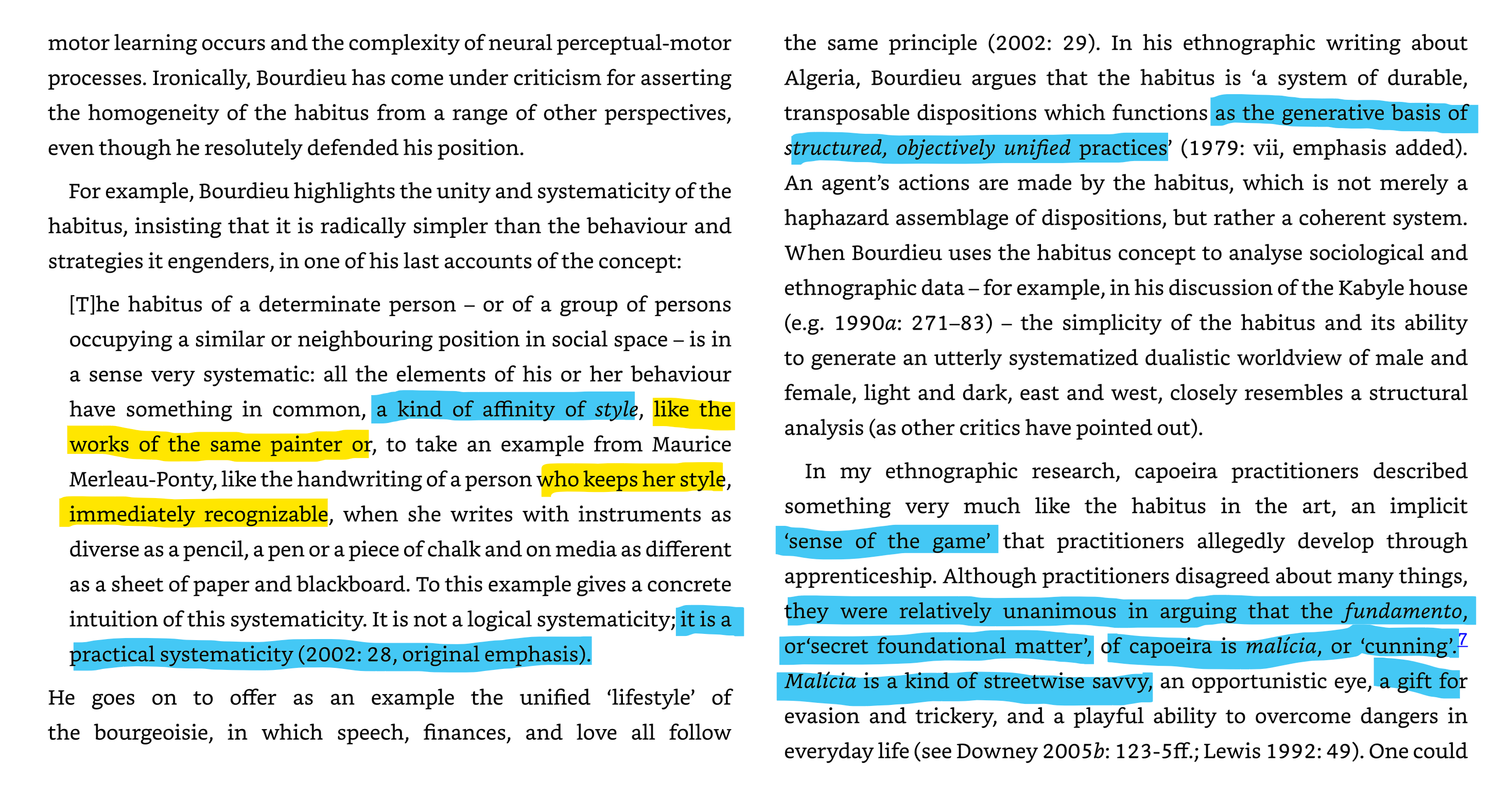

I screen quote and comment more from the article here:
The author is very interested in the division between conscious acquisition and unconscious acquisition, because in the fighting arts so much of what is experienced in the intentional practice of the art and its techniques, and Bourdieu on the other hand is insistent that the structuring process of embodied inscription: habitus, doxa, hexis, occurs unconsciously. The reason for this is that Bourdieu is looking for all the hidden ways in which our cosmology, so to speak, is preserved and passed on, especially in terms of injustice. But, it is easy to appreciate that there is a gradation of conscious to unconscious inscription, actions taken which bring to bear structuring at the motor schema level, which come to embody beliefs, and reasons for being. If the author found elements of this from training Capoeira in New York city, far from the original habitus of Capoeira's development (and all the attendant habitus structuring), so much more would one imagine that these inscription occur richly in the native habitate of Capoeira, where the unconscious structuring can become much more thorough. This is why I include concepts of "authentic" Muay Thai training in Thailand. It's not that more commercial, more adventure-tourist models of practice are "less real", as much as they have been extracted further from so much of the unconscious structuring that gave birth and inform the art, a mode of liberation or change. A well-known American coach of Muay Thai joked about people in the West trying to make their Muay Thai training more and more like "real" Thai training, favoring a much more hybrid approach of tradition and western methodology "What do you want? Are you going to have dogs chasing you on your runs?" (paraphrased), referring to the somewhat well known high presence of street dogs on morning and afternoon dogs which will give chase, sometimes a bit dangerously, when the Thai boys run. The truth of the matter is, even something as trivial as random dog aggression (and discovering solutions to it, in a group) can be part of the field/habitus of Thailand's kaimuay Muay Thai. These group runs, running with the other fighters, in fact are structuring processes. Only one of a thousands that happen in a kaimuay. And, the coach is right. Which of the 1,000s of habitus experiences are you going to replicate, in a foreign gym? Not dogs on runs, but maybe wai-ing formally to your coach? As one moves from the conditions of the production of Muay Thai, it is abstracted, and with it the doxa and hexis is changed, because it is within a differing milieu and its habitus.
In a larger sense, returning to Sylvie's trans- project of liberty, by way of conscious and unconscious conditioning, involving not only the kaimuay, but also the habitus of fighting, something she threw herself into committedly, with over 260 fights, leaving the limiting structure of her own cultural doxa, reconditioning herself at the motor-schema level, what is the doxa she is taking on, in a hybrid sense, built into and over the doxa of her youth and early adulthood? It can only be called a layering of worlds perhaps, accomplished through the acquisition and performance of a fighting art, under great duress. A re-formulation of the Self, into a line of flight, as the doxa of a new world starts to show itself.
A general presentation of the doxa concept:
-
 1
1
-
-
I'm laying this down as an extensive footnote to an understanding that I've felt for sometime, in watching Sylvie toil under the authenticities of Thailand's kaimuay regimens. There is a certain base sense in which we can feel and appreciate that western men and women want to come to Thailand to expose themselves to certain bootcamp-like experiences. While many flock to Thailand to party, relax, drift, fewer come to Thailand from the West to commit, endure and suffer. There is a built in class disassociation in this - although Muay Thai in Thailand is far more diverse than the poverty-stricken images and motivations that become attached to it in stereotypes, under various motivations, Muay Thai is trained not only in rural small towns, but urbanly, in not only in the lower classes, but among the middle classes. People come from the West to even have the freedom of travel, and a kind of vocational selection, are of a different class than most of those in the Muay Thai world. It's not just economically that this is so, it is also a difference in perspective, the way that a person experiences themselves and the project of their lives. It's a difference in what maybe is best called a difference in genus of liberation. Westerners have a kind of interpersonal freedom that comes out of the growing looseness of its social bonds and the atomization of personal definition. In a certain regard, men and women of the West come to Thailand training camps to be liberated, to find, or even construct a liberation, I would argue. Or, perhaps, a restoration. Much can be broad-brushed here. The "freedoms" and disassociations of the West can prove imprisoning emotionally, psychologically, under a great variety of kinds, and the romanticization of Thai customs & traditions, its efficacious, high-level of fighting skill creation, and most importantly the work itself, can become a path to a certain kind of liberty, an evolution that simply cannot be regularly found in one's own culture, if there at all.
This article is founded on Sylvie's own, incredibly intense devotion to this kind of project. It's focused on my experiences of it, but though no one in the history of the sport has ever done what she has done - amassing so far 259 fights in the country (more documented pro fights than any female in history), fighting at an unparalleled rate, and month-to-month out-training pretty much everyone in her gym (that chip on that shoulder) for about 8 of those years - I suspect that these truths can be extracted out to much less intense, but still very real projects by other Westerners, male and female, all the way from serious train-cationing Phuket gym goers who may not ever fight to the historic Ramon Dekkers. These are projects of transformation.
Bourdieu's Habitus, Doxa and Hexis
I'm going to be working from two pages from "Unconscious culture and conscious nature: exploring East Javenese conceptions of the person through Bourdieu's lens", by Konstantinos Retsikas, as found in the anthology Making Knowledge: Explorations of the Indissoluble Relation between Mind, Body and Environment. I use these selections because they provide a succinct explanation of doxa and hexis, in the way that I am thinking about them, but you certainly could turn to more exhaustive primary sources. Also, the essay itself does provide some insight into Thailand's Muay Thai (femeu vs muay khao; Bangkok vs provinces) if anyone wishes to read it. As a way of brief introduction, Bourdieu used the concept of habitus to talk about how one's socially imbued environment (for him a field) structured you, in unconscious ways, inscribing onto your person the social forms of the culture you are in. He was concerned with understanding how class differences, and gender differences (dominations) perpetuate themselves, communicating themselves to new generations. The habitus helped explain all the ways the milieu, or milieus, you found yourself in made you what you are, determining how you saw yourself and the world. You are who you are because you have been unconsciously habituated in mind and, even more importantly, body. The pages below talks about this, and his related concepts of doxa and hexis.
The architectural theorist Erwin Panofsky influenced Bourdieu. I suspect that the example of anamorphism in perspective provides a good touchstone for some of these ideas of the structured subject. In the 16th and 17th century hallways would be painted with anamorphism. We see this today in optical illusion sidewalk paintings, but here is an example:
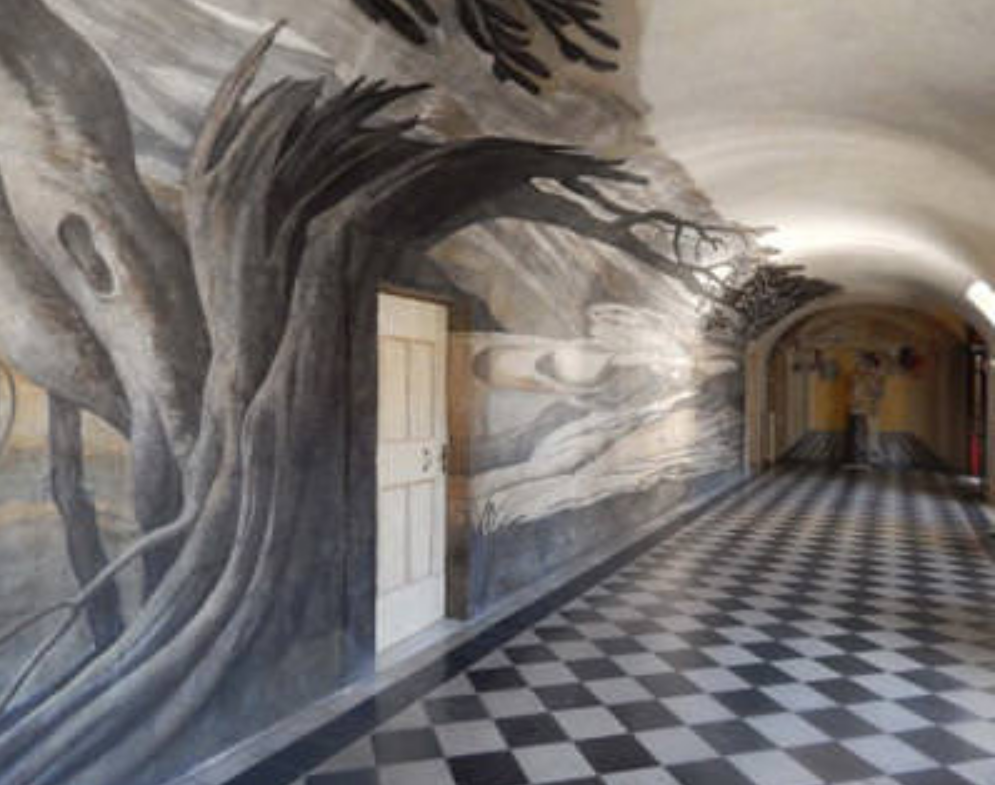
Anamorphic paintings make the most sense if you stand in a particular position, adopt a particular perspective, otherwise they can be unclear or outright confusing. Departing somewhat from Bourdieu's field+capital theory, I would argue that the structuring of the habitus works something like this, but not upon your eyes. It works across your whole being. Because human beings crave sense, and draw sense from others around them, you learn to "stand" in relation to the social world so that the "painting" (its structures) make sense. You are positioned. You cannot help but be positioned, because the organism requires coherence. It must find the pattern. Not a painting on a wall, but a highly complex stratification of human qualities gets doled out to people according to class, ethnicity, gender, religion, and a great number of other distinctions. Everyone learns where to stand, so that the world makes sense. And remarkably, everyone is standing in slightly different places, holding the entire kaleidoscope in place, reinforcing its nature. At least, that's a starting point.
Bourdieu uses doxa to explain how beliefs about the world become inscribed upon your - well, let's say nervous system - person, through the conditioning of sense through the field/habitus you are exposed to. And these beliefs appear entirely natural. The are part of the Natural World. Not only can't you readily think outside of these beliefs for long, it would probably never occur to you to even do so. Through hexis the body is essentially trained to adopt the perspectives of your social position in the milieu. As written above "whole cosmologies" can be anchored in "motor schemes" and somatic dispositions. It starts almost from birth.
This is where things get very interesting.
What authentic Muay Thai training in Thailand involves...and I say "authentic" purposely, because it self-authors, it writes (from Greek authentikos "original, genuine, principal," from authentes "one acting on one's own authority," from autos "self" (see auto-) + hentes "doer, being," from PIE root *sene- (2) "to accomplish, achieve."), what authentic Muay Thai training in Thailand involves is the structuring of the Self at the level of "motor schema" and ultimately somaticized belief. You are not just trained in "techniques" that should be accomplished with precision (see my: Precision – A Basic Motivation Mistake in Some Western Training), you are trained in the entirety of your person, effecting every posture, sigh, gaze, gate, tempo, pause and motor reaction. And, it is done in a highly hierarchical milieu, a situation unfortunately that many Westerners may not even perceive because they have not been inculcated in the culture. The more you do see this, the more the field/habitus of the nak muay will shape you. This is done under the auspices of a sport, the National Sport of Muay Thai, and with the aims of communicating the Art of Muay Thai, but also ideally with very concrete aims of winning actual fights under the demanding aesthetics of the sport. When a Kru tells you not to lower your head in the clinch, or bend yourself, he is communicating habitus truths of the art and sport, which align with the doxa of the subculture...a culture which is not you. You are undergoing hexis, which anchors beliefs you do not have, or may not even understand, as your ruup is conditioned. Ruup (posture, frame, outward bodily disposition) is of immense importance in Thailand's Muay Thai. And differing styles, krus or arjan may have different ruup that they teach. But, you are undergoing a kind of unconscious inculcation to the Art.
A really important part of this, linked to the authenticity of the training, is whether the gym itself is primarily focused on raising Thai boys to become fighters, and not just working as a business in adventure tourism. The reason for this is that we from the West come to Thailand's Muay Thai as adults. We are already, fully inculcated. Our bodies are already hard wired for our beliefs. In Muay Thai the training of Muay Thai starts in youth, sometimes as young as 6 or 8. That is because it is a process of inculcation. It isn't just acquiring skill, or training techniques that you can repeat in the ring, at will. It's an entire picture of masculinity that is taught from the ground up, inscribed on the body of a boy. The more committed a kaimuay is to that process, the process of inculcation, the closer it will be to those principles, those unconscious truths, as expressed by the martial art. This is a fundamental reason why there is very little overt, physical instruction in traditional Thailand kaimuay, nor verbal instruction (two things Westerners hope for). It's because what is being taught is not "this thing" or "that thing". It's disposition. Its a relationship to the space, the milieu, through authority and peers, accomplished and expressed through technique as folded into practice and extremely difficult training. You can extract the techniques out, but you have removed a limb from a living body.
The Trans- Experience of Training (& Fighting) In Thailand
There is of course a great variety of training experiences in Thailand, and exposure to those specific inculcating, milieu-bound forces of shaping may only very seldom happen to a select few. True kaimuays that Westerners come in touch with are few and far between, and are becoming even more rare. And even if in one, age, race, gender lack of language skill, physical size, may really impair a direct transference. Most Westerners come to gyms that have trained their business toward the Adventure Tourism of Muay Thai. But, in the techniques themselves, the scoring principles of Thailand's Muay Thai, the arduous training experiences, the kru dispositions, some if not a great deal of the structuring inculcation can come across.
What I want to raise here is that Westerners are undergoing an inculcation, a hexis, at the motor schema level, which expresses the hypermasculinity of the Muay Thai art, and if this is done sincerely and with deep commitment, this hexis will start to unanchor your doxa, your world. Again, there are great differences between a commercial Phuket gym and a family community kaimuay, but when you come to train, seriously, you are entering a process of new habitus. You are undergoing a new structuring. If you stay for 3 months the effects of this may be minor or fleeting, it takes a very long time to inscribe a world, a cosmology, but if you submit yourself to new habitus, and experience continual shaping, you are necessarily undergoing a trans- experience.
For someone like Sylvie who has spent 8 years of habitus pressures, fortunately many of them in a fairly authentic, family guided kaimuay that existed to raise Thai boys into stadium fighters, this is a world-altering experience. Literally, world altering. It's because the experience is meant to re-write the anchors of your person. In Sylvie's case, and in the case of other serious female fighters, there is also a powerful dis-junction along the lines of gender. One has left the habitus structure of your home culture, the complex anamorphic painting which has told you where to stand for everything to make sense, and you have undergone a specialized hexis training in the art of hypermasculine expression, an inculcation of the bodily dispositions of aesthetic (& effective) hypermasculinity, which is counter to your own gender. You are both in a foreign land, and undergoing the training of masculinist hexis. This is necessarily a trans- experience. The masculinity is not the masculinity of your own culture, so the portrayal does not conflict abruptly with your own lifetime of inculcation. This makes the overwriting of the body on the unconscious level not face as much conflict it might have in one's own culture. When living in the culture of Thailand, moving about, learning the language, forming friendships and bonds, you are being rewritten. You are not in a tug of war between what the gym is inscribing, and what you have been inscribed by your whole life. You are being trans-ferred to another world, starting at the motor schema level.
There is not time to go into the rich and complex ways that this inculcation of disposition occurs in Muay Thai. Breathing patterns, signatures of aggression, obedience, principles of auton (endurance), all the ways the body unconsciously signifies itself. It is not so much that these are disciplined away, as, because she was a part of Thai boys who she trained with, under a silent hierarchy, they become absorbed and habituated. Many times they will become conscious aims. Bourdieu likes to focus on the unconscious processes, and this is important, but at times they become dispositional skills that are practiced until they become your own. I am not talking about techniques of Muay Thai. I am talking about techniques of the Body and Person. One has left behind, to some degree, what you "are", and is in discovery of what one can be. Its a flight of self-creation under the exposure to a regime of habitus, doxa and hexis.
There is a wonderful, instructive analogy that I cite in my article on Deleuze, Wittengstein and Transidentity. I'm going to quote from it here:
QuoteDeleuze and Guattari want us to see a priority of affects, the way that our affects actually work to define what we are capable of doing, and thus what we are. In a telling, counter-intuitive example they suggest for instance that a racehorse has less in common with a workhorse than does an ox. Working within a cartographic measure of parts which undermines any descriptive speciation, they write:
Lattitude is made up of intensive parts falling under a capacity, and a longitude of extensive parts falling under a relation. In the same way that we avoid defining a body by its organs and functions, we will avoid defining it by Species or Genus characteristics; instead we will count its affects…A race horse is more different from a workhorse than a workhorse is from an ox (257).
For, the body of a racehorse goes beyond our classifications of kinds—though these too demarcate the kinds of experiences a racehorse can have, for instance the experience of mating with a workhorse. A racehorse will likely experience things in a manner no workhorse will come to, while the ox and workhorse will have a community of affects historically determined across species.
Deleuze and Guattari suggest that even though a race horse and a plow horse may share a great number of features as part of being from the same species - and there are so many ways to quantify this - at the level of affects, one might even say hexis, a plow horse and an ox are of greater similarity. Their lived experiences in a shared habitus inscribes on their bodies a "world" a cosmology that a race horse cannot have. This is the praxis of training. When you commit yourself to the living milieu of a Thai gym, not only the rigors of physical training (the twice a day bagwork, shadowboxing, padwork, clinch), but when the training is authentic, to the bodily dispositions, the micro-motor adjustments of personal expression, the aptitudes of gaze, posture, gate, rest, aggression, within the inculcation, and the social restraints and demands of authority, friendship, exchange, the plow horse and the ox have something powerfully in common, a "community of affects". A Hexis, and to some degree over time doxa. You have become other than your history. All your possibilities that were before you within your native habitus did not contain this. This is the possibility of a new world, a differing cosmology, and your place in it, through the practices of an art in a culture that is not your own, taken to the nth degree, because it is a trajectory.
-
 1
1
-
-
7 hours ago, MikeCote said:
Been doing MT for about 7 years. I’m right hand dominant but left eye dominant because my right eye has very poor vision. I learned orthadox first for four years but then spent the two year trying southpaw. I have huge strengths in both. I was wondering if in your opinion if It’s essential my left eye is forward because it has better vision? Is southpaw a viable option as well or a big no no because of it?
It's very hard to tell about these kinds of questions because a big part of this goes to what your training opportunities are (sparring, etc), and how coaches feel about your stances (ie, the kind of support you might have). But, all things being equal, I don't think your forward eye would matter that much, assuming you are not blind and can detected motion and shapes easy. Your eyes probably work together, you aren't reading letters off an eye chart. You seem to feel physically confident in both stances.
I've always thought that if a fighter had the opportunity they should work towards switching, learning to use their strengths from either side, and hide their weaknesses. It increases a need to read the situation and the opponent, and allows you to attack both edges. But, this is really advising from extremely far away from whatever you are going through.
One thing you might find interesting, if you are a patron, is this 2 hr video which traces how the legend Karuhat changed Sylvie from orthodox to southpaw, so she could correct some bad habits, and also put her strong hand in the lead. It may give you ideas for yourself: https://www.patreon.com/posts/karuhat-sor-3-to-13300833 . Karuhat was a switching fighter.
-
 1
1
-
-
Thanks for the suggestion. We can't do that merchandise right now, but if anyone wants to donate to his family we can send the money to them. This is our crowdfunding site. We cover all transfer fees. Just send me a message saying how the donation is for:
https://www.indiegogo.com/projects/support-muay-thai-legends-in-the-covid-19-shutdown#/
-
 1
1
-
-
Hey everyone, thank you for sharing your thoughts and personal connections to Karuhat. Entries are now closed, the winner or winners will be contacted through private message. It's a beautiful thing to celebrate Karuhat!
-
4 hours ago, Richard Weston said:
Will Silvie have a chance to fight there?
Really don't know at this point.
-
Here is Dangkongfah posing with her belt the next day with Kru Diesel who helped her train a bit before for this fight out of Fight House in Singburi. Dangkongfah a week before her WBC fight also fought in the National Amateur Muay Thai tournament, a yearly event only among Thais, and took Silver in her weight class.

-
1
-
-
One of the more compelling female Muay Thai fights happened this week, a WBC Super Flyweight, Muay Thai World Title fight between Souris Manfredi (France) and Dangkongfah Soujainoi (Thai). The fight itself was action-packed, and also pitted quite different fighting styles and skill sets against each other, enough to make it interesting on its own, but perhaps even more so, the stories behind the fight and what it meant brings interest and thought to the match-up. I'm writing here to call in a few more of those details to bring more attention to the fight, and its place in the development of female Muay Thai. Sadly, at this point in female Muay Thai fight history even big fights like this just get an Instagram post with a belt, a few shares and vanish. Instead, there are deep stories and lives that come together in these fights worth writing about.
The importance of the fight may start here, with the WBC world rankings of female fighters (below, the top 10 listed in the weight class of this title - unfortunately due to an update typo Stamp is listed twice). The WBC over the last 6 months or so has been working hard to develop a world ranking for female Muay Thai fighters with an international scope in mind. It's extremely hard to grasp Thai and western, and Asian female fighter fight scenes in a single list. They are so diverse, and the Thai landscape changes so quickly, it has felt like a Herculean task to even come close to something fair, timely and accurate. The WBC has thrown all its effort into this, so much so it seems that the competing WMO has followed suit and attempted their own rankings recently. The WBC's is here, the WMO's is here. It's actually good to have competing orgs attempting to build pictures of female fighting excellence because it's so hard to do. As someone close to the pulse of female Muay Thai in Thailand I can see where these rankings can fall short, simply because logistically you have to rely on a select few as advisers, people who are in the game, and each will have their own political alliances, fighters they necessarily are connected to. It's just the reality of rankings as they are very difficult to create, and organizations that work hard to make and maintain them deserve great credit. With two organizations creating rankings though it helps fill in the gaps any one might have.
In any case, this was a huge fight in the context of the WBC's effort. They had already had their first WBC belt fight between two Thai female fighters, Sanaejan and Buakaw, with Sanaejan winning the belt at Mini-Flyweight, a fight fought in the Lumpinee parking lot improvised studio due to COVID restrictions - otherwise it would have been the first female fight in Lumpinee Stadium itself, an epic moment in Thai history - the first fight IN Lumpinee Stadium has been scheduled, read about that here. This fight between Souris and Dangkongfah represented the very first to reflect the wide-scope goals of the WBC, the international aims, as it pitted a very solid, experienced fighter from the west vs a very solid, experienced fighter from Thailand, top ranked, bringing the two worlds together.
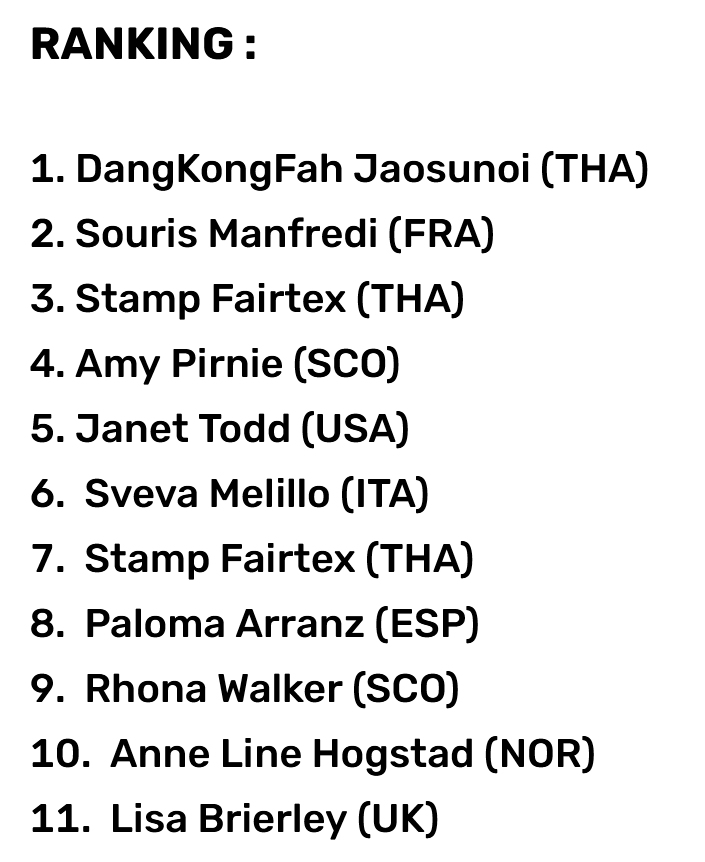
One can get the feeling that these preliminary rankings are in part assembled in order to put on these kinds of fights, for instance opponents can suddenly be added to the Top 10 rankings at the last minute before proposed matchups, but the reality is that we have to start somewhere. We have to start with a picture of the best, and then the best can start fighting each other and determining a truer sense of what an accurate ranking might be. This is exactly that kind of fight. It's the first time under the new WBC ranking system that western and Thai well-known, acknowledged fighters faced off, to create a real hierarchy, and this is exciting stuff.
You can see the fight here below, an edit from Dangkongfah's corner Facebook stream:
There's more to this match up than meets the eye too. There is a history between these two fighters, and for Dangkongfah a really compelling story that has covered maybe the last 5 years. If I'm not mistaken, Souris had beaten Dangkongfah several years ago in Khorat, in a fight that Dangkongfah protested as a dubious decision. This was earlier in Souris's development as a fighter, when she was with her coach Charleton in his gym in Khorat (both fighters were local to Khorat at that time). They were way off the beaten path, training and fighting away from the bigger shows that people in the west hear about. It's very hard to go your own way in Thailand, so serious props to both of them, (forgive me, as close as I follow female Muay Thai, the details on this are a bit muddy, I'm just trying to draw a broad brush). Surely this victory was a meaningful one. Dangkongfah was, I also believe, simply a young circuit festival fighter at the time, and I'm guessing was up in weight, so likely had that advantage. In fact Sylvie had a remarkable experience with Dangkongfah several years ago when fighting up in Khorat. A (then) pudgy young fighter who was drawn to Sylvie for some reason inserted herself into Sylvie's corner (Sylvie had no corner for this fight and just collected one from the local krus on the mats), and helped urge Sylvie onto victory. You can see clips of this here. We've had some pretty amazing experiences in Isaan, but finding this assertive, confident girl in support may have topped them all. She was full of vitality, confidence, a kind of magnetic enthusiasm. In fact, after the fight she told Sylvie that she wanted to fight her, "just for fun." Sylvie just laughed. Dangkongfah was 16 years old (looked 14 to us) and we guessed close to 60 kg (Sylvie is consistently around 46 kg). You can see that fight and her in Sylvie's corner here. Dangkongfah had won her own fight fairly spectacularly, earlier on the same card. In any case, it introduced us to this incredible energy of a girl.
Maybe a year or two later we heard that Fairtex had taken in Dangkongfah, a bit after they had taken on Stamp, starting their commitment to develop a female Muay Thai and MMA fight team. This was in the very beginning of it all. I don't want to be hard about it, but just to generalize from talking to others close to the situation, at the time the feeling seemed to be that Stamp was the real, serious prospect. Stamp was maybe a top 5 female fighter in her weight class in Thailand at the time, coming off a difficult, somewhat blowout loss to Phetjee Jaa, but beating Sylvie at 48 kg. Dangkongfah was instead an overweight, Isaan festival circuit fighter, a funny girl, who was taken on in a different way. There were stories of her being without means of support, I believe, though I'm not sure how much that was so. Her father is the famous fighter Kongfah, for whom she is named. It's enough to say that it may have been a bit of a feeling of charity and generosity in how she was taken in at this early stage of their female fight team, an out-reach from the Fairtex side, not expecting a star prospect. She and Stamp were the first two female fighters of Fairtex. Stamp then was molded into a ONE Championship superstar, and at some point Dangkongfah, having worked very hard to get into significantly better shape while there, left Fairtex. It's difficult to describe this position she was in with enough force. Thai female fighters until a few years ago, had very few career opportunities by the time they turn 18. The best female Thai Muay Thai fighters were all 14 or 15 when they were fighting as prize-fighters very frequently, in the circuits, developing great skill and game-finesse, but once they hit about 16 everything pretty much starts to shut off. You could join the Thai National team and be awarded big money from the government if you get Gold at IFMA World Championships. You could maybe occasionally fight a high-profile fight for a big dermpan, but your training inevitably tails off, your fight opportunities tail off. When Dangkongfah left Fairtex (and I don't know the circumstances of that), she was literally looking at the end of opportunity. She was not that developed in terms of skill, but certainly rich in experience. She was not the best circuit fighter in Isaan, like someone like Loma was. She had just left a huge name in Fairtex that was at the cusp of investing lots of money, and lots of will into building and promoting Thai female fighters. Fighters like Wondergirl and now Dokmaibaa have since joined the team. And Stamp took off like a rocketship, not only as a fighter, but a promoted fighter with a prominent fight program invested in building her name and career. Dangkongfah stepped out of that wake, into what really might be expected to be Muay Thai oblivion, for a Thai female fighter.
But...fueled by the example of ONE promotional success, when Channel 8 broke from its MAX Muay Thai contract they started their own version of MAX, with two weekend shows in Superchamp and Muay Hardcore. Whereas MAX had barred women from the ring (Sylvie is one of only 4 female fighters who ever fought in MAX Stadium), the Channel 8 fights did the opposite. They took the lead from ONE and made female fighters, in fact it was Thai female fighters, their headline stars. First, it was Sawsing, a natural star given that she had long been one of the best female fighters in Thailand, but then, interestingly enough, they took on Dangkongfah as a headline fighter as well. From the outside, it would seem like they plucked her out of nowhere. She was not riding a long wave of success, at least not outside a very local scene. She was just an Isaan fighter who hadn't fought very much recently (because she'd been at Fairtex) but with a big heart and energy. But, she matched the Entertainment Muay Thai promotional model perfectly. I've written a lot about how worrisome the Entertainment Muay Thai rulesets can be as a threat to traditional Muay Thai, but...they are also an opportunity. And Dangkongfah thrived under the format. She ascended.
What I really love about her as a fighter is how much she defies the passionate westerner perceptions of Muay Thai excellence. We have fantasies of incredible crispness and balance, the effortless gliding across the ring, the impression that you are above the fight through skill and acumen. There are so many examples. You look at Dangkongfah and you see none of that at first blush. But I'll tell you, she is a fighter who has earned with experienced qualities that are intimately Thai, those of the Thai fighter. It's just not the things that appear easily to the eye. It isn't demo-perfect Muay Thai. It's the Muay of experience, it's "bones", as Thais call it. It's the Muay of prize fighting. Yes, what makes Thailand's Muay Thai so special IS the beauty of techniques...but beneath those techniques is another beauty. It's the beauty of the experiences of fighting itself, since a young age. What is so cool about Dangkongfah as a fighter is that because - unlike many Thai female fighters who do express quite beautiful Muay Thai - she does not have those keynotes that people look at for symbols of excellence that in some Thai female fighters can be a kind of "point fighting", she has the other excellence, the excellence of feeling a fight, directing a fight, knowing how to win a fight, and it shows through.
This is not a knock on other fighters, many technically crisp fighters also possess this fight knowledge, but her particular mix of fighting skills allows this very special quality of hers, to shine. The "bones" show. It's not easy to see if you aren't looking for it. So, a bit of digression to bring it out. Many not familiar with Thailand's traditional Muay Thai scoring don't really grasp the importance of a narrative scoring model. You can read more about this here: The Essence of Muay Thai – 6 Core Aspects That Make it What It Is. The narrative model means that you have to tell a story in a fight. Progress in what you reveal, in the tempos and momentums that you choose, and they mean something in terms of what has already happened in the fight. Round 3 means something in relation to rounds 1 and 2. Round 4, in relation to round 3. Dangkongfah has been a prize fighter under narrative scoring since a kid. It's not "damage" or calculated "points", it's how much you control the narrative of the fight. It's how much you dominate, and WHEN. Everything builds to a story of your dominance. This is what she is really good at. And you'll see it in this fight. She has a feeling for when and how. It doesn't matter if punches flail out and are ineffective at some point, or if she momentarily loses balance, it's about when they land, and when she's rock solid. When the car gets rolling, she knows how to push. A lot of Thai female fighters will not risk the loss of control (beauty) to get to where she wants to get. She's very unlike many Thai female fighters that ascend to a wide-spread awareness, and it is easy to underestimate her. She is all the guts and IQ that come from fighting as a prize fighter since a kid. If you want to know what she's about, watch her in rematches. She is ridiculously good at rematching an opponent. I've watched her fight many times. Sylvie has fought her, I've seen her fight twice in person. She has a focus and will in rematches that just controls the game. She escaped with a lucky (probably biased in her favor) draw decision vs Dani on Channel 8, and just ripped her in the rematch despite giving up what seemed like visible size. She beat one of the best fighters in Muay Thai on Channel 8, the brand new ONE Championship Champion Allycia Rodriguez (who had just defeated Stamp for the title), rematching her for the biggest side bet of any female fight in Thai history (1 million Baht) and the Thailand title belt, and totally controlled the fight against someone most would say was technically superior. (At the time Dangkongfah had been using social media to argue that she deserved to fight for ONE, the promotion which made Stamp a star, and then out-right beat their brand new champion, who had defeated Stamp for the title... it was a solid argument.) She firmly beat Souris on Channel 8, in a 3 round rematch from their disputed Khorat fight, and so this WBC fight was again a rematch. Anytime I've seen her rematch she's dominated, almost magically. It's not an accident. And, this fight was coming off her first true loss in years, having lost to Barbara Aguiar on Channel 8. She had something to prove. It was a pretty extraordinary performance, this WBC title fight.
Souris Manfredi, though she does not have wins versus other WBC ranked fighters (that I'm aware of) has nonetheless taken on HUGE challenges as a fighter, with tough-fought losses to Phetjee Jaa in Thai Fight (maybe the best female MT fighter in the world), a big weight discrepancy vs top fighter Sawsing on Channel 8 and against Dangkongfah herself. She went to Myanmar to fight and win a Lethwei title, and has fought and won in in a Bare Knuckle promotion in Thailand (a promotion her coach just announced she's now pursuing full time, leaving Muay Thai permanently).
Stylistically this is a great fight, because just watching Souris you can see how hard she's trained in specific techniques and positions. She's crisp, sound and exudes discipline and commitment. For instance she has lots of early success with nice straight punches that seem to pop through a seemingly porous guard. She looks superior. She presents Muay Thai in a highly trained, well-defined way that is clearly visible to the eye. You can feel that she's worked extremely hard at developing herself. Because we in the West kind of exoticize the precision of Thailand's Muay Thai, we work very hard at tracing those perfect lines, and capturing them in combination. What is so interesting and cool about this fight is that Dangkongfah, somewhat unusually, doesn't have that supposedly "Thai" precision. A legend we know privately wrinkled his nose at Dangkongfah's victory over Alycia, preferring the latter's technique even though the win was clear. A coach might look at her on tape and think: she's full of holes, she's easy to pick off. You can make game plans, and be right about it all...but just try. She has something deeper than technique. She has a feel for the game, she's been a prize fighter since she was young. She made this in the festival fight circuit of Isaan, where "pretty" isn't really what it's about. It's about taking that sidebet when its up for grabs, controlling the narrative and it's about heart. It's a deeper lesson of what fighting is. It isn't picture-book. The Muay Sok legend Yodkhunpon once told us of growing up in the fighting rings of his boyhood Isaan "points are for Bangkok". Drawing from another sport, in baseball you talk about pitchers who have amazing "stuff", and then you talk about pitchers who know how to win even if they don't have great stuff. Dangkongfah is that kind of pitcher, she knows how to win.
The final context of this fight is even more remarkable. The fight took place in an improvised ring at the Fairtex Training Facility in Pattaya, the very same place she was the Cinderella step-sister of now world famous Stamp. In fact everyone in attendance to this title fight watched Stamp go through training a few hours BEFORE this fight. One cannot help but feel Dangkongfah herself took into the ring with her that contrast between Stamp and herself, the one who Fairtex embraced and built and she herself who went her own road. Here she was fighting for the WBC World Title in the very same space she was in when she was a pudgy funny-girl from Isaan. Finding herself there in that ring in Fairtex was an unexpected twist of fates. This World Title fight was actually supposed to be the showcase fight under the Lumpinee banner under GoSport's new push to create a different kind of promotion for Lumpinee Stadium. A New Lumpinee. When first proposed I imagine there may have even have been a chance that this fight was going to be the first ever INSIDE the ring of Lumpinee (which has at the time of this writing not happened yet but is scheduled), and maybe even for a WBC belt and a Lumpinee belt (early promotional material from GoSport had both belts advertised on female fights). But, as it happened, GoSport and the WBC had a disagreement, the contract for the belt experienced complications, and the fight found itself on this promotion, Full Metal Muay Thai, put on in the Fairtex facilities due to COVID restrictions. It's enough to say, this fight took a swerve from a possible pinnacle place in Muay Thai history, to a place of personal importance for Dangkongfah. Not Lumpinee, but at Fairtex where she once may have been underestimated. This is the underdog girl.
Sawsing, who had come with her family and team of Thai female fighters to support Dangkongfah, posted this photo of the WBC belt on the hood of the car they drove down in from Singburi, that's how special it was for them. Interestingly enough Yannick, a Frenchman who owned Warriors gym in Pattaya, is the generous man who held the contract for the belt. He had purchased the belt (a significant expense) because he felt felt that it was ridiculous that a fighter who becomes World Champion does not get to keep the physical belt in Thailand. Many do not know this, but this is true of Lumpinee belts, Rajadamnern belts, pretty much all belts. So he in real generosity also purchased the belt itself to go to the winner. One imagines he hoped that this belt would go to Souris Manfredi, who also from France. Instead it was wrested away by the festival fighting girl from Isaan, the remarkable, incredible Dangkongfah.
If you want the latest in Muay Thai happenings and things to inspire: sign up for our Muay Thai Bones Newsletter
-
1
-
-
3 minutes ago, Joseph Arthur De Gonzo said:
I tried to look at the video of the live stream, but the link is dead and I can't find it on their facebook page, do you still have access to it on your side?
Unfortunately he deleted the live stream (maybe so his fighters can't be studied). Sylvie put it up as it was streaming. If you follow the gym they do stream fairly often.
4 minutes ago, Joseph Arthur De Gonzo said:Also, I guess Kru Thailand would not be suited for a heavyweight/cruiserweight right?
It would really depend on your skill level, and your training needs. But no, at this date it doesn't look like fighters close to your weight. But, if you are there for technique Kru Thailand is ON POINT.
-
Reading the updated and revised list if I could just add my own twist to it all, I think Kru Thailand's gym is the most fascinating gym of all of them. This is something we experienced in other gyms that is really special. When a gym is building a class or two of Thai fighters (age groups or weight classes), and the fighters are all being directed by a Golden Age serious kru, this is a beautiful thing to be folded into if you can. It's never sure how long this will last. One year, three years, its hard to tell, but there are special times in Thai gyms that are not organized around westerners, when if you are there you get a very different experience. This would be a gym I'd want Sylvie to train at if she were living in Chiang Mai. It's just a vibe we felt while filming there, and something you can see in the live streams that Kru Thailand puts out. This of course is not a blanket recommendation, because people are at different levels, have different needs, have differing tolerances. It's just based on the feeling I recognize from that gym's example. Take it for what it is worth.
-
Sylvie has started voicing commentary on a stretch of fights from 2017 which did not get a commentary yet. Below are the last two she's published. Just watching these fights is incredible for me, because of just how far off the map of regular fighting this is. She was fighting maybe 35 fights a year, and at this point she was facing very large opposition, multiple weight classes up, including some of the most accomplished fighters in Thailand. What is more remarkable than anything about these two fights isn't that they happened, but that because she fought so much and faced pretty much anyone promoters would put in front of her, she didn't give it a second thought. This is just a run-of-the-mill week that happened to have the 118 lb Northern Thailand Champion and the 112 lb WPMF World Champion, back to back, 3 days apart. Any of these fights would be a fighter's apex memory, but for Sylvie this is just the regular rough terrain she climbs. For those that don't know, she's a 46-48 kg (walk around weight) fighter giving up 25 lbs and 15 lbs. It's also amazing to have her perspective on so many of her fights.
You can see all the video of her fights on her Complete Fight Record page. Any fight # that is underlined and in yellow is linked to the video and many of these are commentary video.
-
 1
1
-
-
This as a lengthy answer I posed on Reddit in answer to someone who was attempting to get ahold of the greatness of Samart. He had read some articles and seemed to keep coming up against repeated appeals to his "IQ" and lots on his side teep. As easy as it is to admit or even claim that Samart is the greatest, because so much of his career is unrecorded on video, his celebration does sometimes feel a bit vague. This was my take:
The greatness of Samart has a kind of mythological quality to it, as there is almost no footage of his fights in his prime. This means that we kind of fill in the hole in the historical record with his projected greatness. In boxing history this happens as well, you can hear very knowledgeable people talk about Harry Greb (1920s) with reverence, taking him to be as great as anyone who ever fought, with no fight footage. The story of Samart's greatness kind of flows from a few directions. First of all, its about when he fought. He changed the game as it transitioned from the Silver Age of Muay Thai to the Golden Age. I write a bit about this here, he MOVED like nobody else, maybe before or since, but was kind of the first to do it:
This gives his a special aura that fighters in history have. They change the sport. The other part of this is, in Thailand itself, and by the fighters themselves, he is regarded as the greatest, maybe the way that Jordan is in basketball. Jordan rode the wave of a sudden popularization and huge economic growth of the sport, and also came to define it. It wasn't just that Jordan was incredible, its the Time he played in, and the aura he developed as his brand in the NBA in terms of marketing awareness exploded. After Samart retired he made movies, he became a handsome singing star, he became a SUPERSTAR, culturally. This is important, because Muay Thai fighters in Thailand have had a stigma of being low class. He was kind of a James Bond of Muay Thai, just as Muay Thai was peaking in popularity. This charm and popularity, beyond the world of Muay Thai, is no small thing to Thais, and to Thai fighters who were his contemporaries. He was a cross-over star. To us, maybe not a big deal, but to Thais huge. Your aura is what you are as a fighter, and his aura grew well beyond the ring. Thais call it sanae, meaning something like charm, but carrying with it the feeling of invulnerability. A "you can't touch this" aura. Legends of the past complain that fighters of today do not have this.
Then you add in his WBC World Title. He wasn't a World Champion for very long, other fighters like Weerapol have been WBC champion more prolifically, but for Thais boxing brings much more International honor than being a Lumpinee Champion. The country celebrates and idolizes its boxing champions, especially from that era. Some of Thailand's wide reverence for western boxing excellence came from the strong patronage of boxing from H.M. Rama IX, who not only modernized Thailand's Muay Thai, but also held boxing in extremely high esteem and helped promote it. That Samart and the King had the same birthday date (December 5th) probably only added to the magical connection, in a country where days and dates really matter.
So, when you talk with Thais it's all Samart.
The other layer of this is that western, English language coverage of Samart becomes exaggerated and embellished (probably), because of his immense reputation in Thailand. A super gifted fighter with great eyes, a fighter who moved like no other, a WBC Boxing World Title, and almost none of his prime captured on tape, its a recipe for idolization.
Just as with Jordan, there are arguments to be technically had against his GOATness, if you want to dig into everything. He almost never fought up, and sometimes fought down, so, powerful enough connections gave him matchups that were favorable, albeit against a very strong field. This is unlike many great fighters who were forced into weight classes that were not their own, once they cleaned out their own natural weight division. Gym and matchup power is a very important aspect of career greatness, ask Somrak about that. You can say he wasn't a great clinch fighter, more of an anti-clinch fighter, and that he lost badly two of the more high-profile fights he fought vs Dieselnoi (for FOTY) and Wangchannoi (his final stadium fight). It even could be said that if Samart hadn't come back from boxing to win his 3rd FOTY, his older brother Kongtoranee, who is largely forgotten by English language history, could have had an even better career with more stadium belts, 2 FOTYs, and coming within a hair's breath of winning a World Title in boxing (if I recall?)
But these are just jostling greatness next to greatness. To the Thais, pretty uniformly, he is the greatest. You can see the votes we tallied among ex-fighters as to who is the GOAT: https://twitter.com/mediasres/status/1432803403860561921
Only Wichannoi and Dieselnoi are even in the ballpark.
Also, really importantly, some of his greatness might not even be evident from video at all. Sylvie never had been a big fan of his fighting style on video, she just isn't a lover of how he fought. Hey, not every great fighter can be your favorite. But when we filmed with him she was blown away by what it felt like to be opposite him. You can see that session here (patrons): https://www.patreon.com/posts/17174396
She's filmed with countless legends and even though they were only working through basic movements nobody moved like him, nobody stood like him. Even in his mid 50s his aura was incredible, and his movements like nobody. He has a naturalness, an ease, that is really prized by Thais, and in person it really hit her. On video she didn't have strong feelings for him, but in person he completely won her over. Everything they said was true!
So, for me its a mixture of things. He changed Muay Thai with his style, he had incredible eyes and feel, a very relaxed defensive manner combined with sudden, unexpected power (Krongsak told us, Samart was born to fight), he had gym power to set up favorable matchups, he became a cross-over cultural superstar, and the lack of prime career footage may have even magnified his aura as the decades went by. Also, in a culture like Thailand its very hard to carry the mantle of greatness. So many great fighters end their careers in very difficult circumstances. What makes him great is also how he carried greatness, and still to this day carries it, I think.
Here are two related posts:
You can also see my 30 minute video study of Samart's victory over Namphon, as a patron: https://www.patreon.com/posts/54893112
-
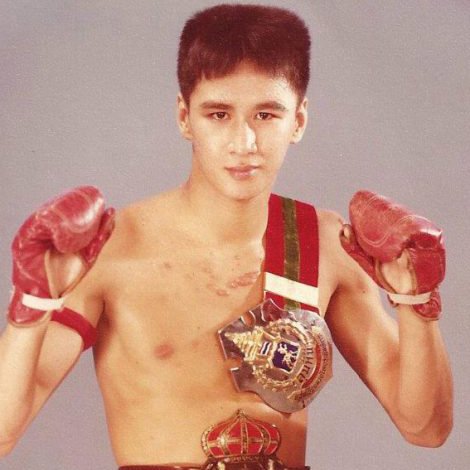 1
1
-
-
6 hours ago, Francis said:
I'm just wondering, could Yodkhunpon's elbow style work with elbow pads?
Definitely. The traditional use of the elbow in Thailand was a precision strike meant to cut, but Yodkhunpon used them differently. He used them with rhythm and in volume, often to set up other strikes like knees, to which they are naturally linked. Being padded doesn't really make a difference in this. You would just choose which strike to create openings for, which could include a heavy elbow for a knockout.
And yes, you can cut opponents through elbow pads, I would suspect, if you caught the bone and skin just right.
-
 1
1
-
-
Can't speak as a fighter, but as an observer, especially for westerners, training & fighting is a self-disciplining act. You are putting yourself through something, and when that manifests itself as something like low-body fat, and exposed muscularity, it makes sense that that is part of the meaningfulness of doing that. It also helps that big cutting is seen as a way of gaining advantage in matchups, so if you win that way, it makes sense for it to add to the meaningfulness of the training & cut.
But, you are right, it does detract from just becoming the best fighter you can be, developing the skillsets to win in fights closer to your walk around weight, etc.
-
 1
1
-
1
-
-
There is a very strange experience, drifting slowly through this photograph as the faces of the fighters and krus of the Dejrat Gym in the mid-90s. Just seeing the photo as it was on the wall would never elicit this feeling. Even standing before it, there is very little psychology, very little sense of individual histories. Rather, one might get a sense of a moment in history, this history, this gym. But, as the screen pulls across these faces the entire photograph opens up. You can see and feel the differing disposition of each man or boy, the qualities of their nature, as they face the hardness of the art and sport of Muay Thai. They are all differing materials, exposed to the same forceful wind. There is just such extraordinary variety and humanity here, revealed at this level of a view. In some ways, the documentation of a photograph can always give and bring more, than whatever we imagined of it. This photo has hung there, low on the wall, near the training ropes of the ring, for countless years. An anchor-point to a year back in time. But, here it becomes another kind of thing. A record, caught on a sliver of time, and somehow it all seems precious, and Muay Thai itself of that time feels precious. You can feel it eradiating.
Muay photography feels like it should do something like this. Because it is a historical form it should capture more than it seems to, capture in the sense of a net cast, not knowing completely what is in there. We are documenting more than events, or physical dynamics. We are capturing times, and because it is an art, we are capturing times that are layered, sedimented with other times. We do not even know all the things that are in our pictures.
This is the original photo:
This photo is also part of my photo essay Chatchainoi: The Man of Stone
-
This is one of the most interesting things for us who laud the excellence of the Golden Age of Muay Thai, and the ages that surround it. The very truth of the matter seems to be: Fighting excellence has come out of great cruelty, intense difficulty, and even injustice. We think somewhat glamorously about things like how Dieselnoi's patron was a mafia boss and godfather, in the Hollywood sense, but this is, in a lived reality, a realm of harshness and crime. The romance we have towards traditional hierarchies include also injustices, and dictatorships in life. Muay Thai (as with so many fighting sports in the world) likely laundered not only slews of monies (gained from cruelty & suffering), but also social statuses. This is the nature of it all. It might be said that it was an immense oppression machine, a compression machine, that produced not only the excellence of these fighters, but also the fights and promotions that produced them.
Talking this over with Sylvie, this seemingly inherent connection between cruelty and fighting excellence, historically, makes me value all the more the precious achievements in Self that people like Dieselnoi, and fighters of his age produced. These men fashioned high art, of themselves, in the harshness of opportunity and circumstance. From where we stand now, it seems like the worse thing of all to forget these men, to forget or lose what they created, out of that harshness. It was that medallion of gold that they mined from their flesh, forged into an art and history. When we remember them, when we document them, we extend its reason for being. Dieselnoi once was talking about the differences between his historical fate and that of Samart, in the context of having beaten him in the fight of the year, The Holy Grail of Fights. He says, he would not have wished upon anyone his fate. He explained that in Thailand it's not how you go along, its how things end. Just like in a 5 round fight, it's the 4th round that matters. For someone like Dieselnoi its the ending that matters, for all of us who are seeking to record and celebrate the creations of these men, the excellence they drew out of extremely harsh circumstances, its about fashioning that ending for them, the one that says: It matters. We can do that now.
-
 1
1
-
1
-
-
A few extra thoughts and context on this historic moment. Noteably, not only is there a female fight on this card, but also keeping with the modernizing, internationalizing brand of this promotion, so are 3 round fights, somewhat in echo of the Entertainment Muay Thai promotions in Thailand like Superchamp and Muay Hardcore, which have actually featured female fighters like Sawsing and Dangkongfah as headline stars. Which means that this 3 round, action-oriented promotional style is in some degree also entering the Lumpinee ring for the first time. The female fight will be 5 rounds, and one imagines it will be scored in a traditional way, as will the other 5 round fights on the card. The 3 round fights serve as something of a pre-lim. What makes this of interest is how this is a kind of mashup, or integration of trends that are facing Muay Thai, and that it is being done under the Lumpinee auspices, in the Lumpinee Ring. The GoSport promotion seems to have its eye on this more modernizing style, featuring young announcers that speak in Thai, English and Chinese (if I recall), and appears to have plans to stream fights through their website, perhaps with a much greater emphasis on eventual non-Thai physical attendance (part of the anti-gambling aims of Lumpinee). The movement towards opportunity for women in the Lumpinee ring cannot be completely separated out from these larger trends, as promotionally they seek to bring traditional 5 round fighting together with female fighting and 3 round fighting as well. There is no doubt that the Entertainment forms of Muay Thai, including those of ONE, MAXX and Channel 8, have inspired these changes, there is no telling how this might play out in terms of scoring, which is where traditional Muay Thai and Entertainment Muay Thai diverge.
Also worth noting, the "first fight at Lumpinee" honor was given to Sanaejan and Buakaw, two Thai female fighters. It was more than fitting that it was two Thai female fighters to hold this technical honor. In that fight as well a WBC World Title fight was put at stake. It seems that promotionally the relationship with the WBC has broken down, and the higher-profile "World Title" plans for female fights at Lumpinee may have been stalled, perhaps to be picked up by new agreements. Not that titles particularly matter, but in the Thai promotional world they are admitted signatures of history and importance, as New Lumpinee is working to position itself authentically, but also innovatively, in Thailand's present day landscape. The WBC had seemed to be running in parallel to Lumpinee developments, developing a researched and frequently updated international ranking system to support those coming title fights. This meant that organized weight classes and rankings would have been at play in deciding which women fought at Lumpinee, somewhat mirroring the tradition of male fighting in the stadium. Interestingly, this concrete 1st of two women fighting in the Lumpinee ring itself, will be accomplished between a westerner and a Thai female fighter.
-
1
-
-
[Update edit Nov 8: This fight to have been rescheduled for November 13 see source, it was at first set for November 6th. But with some disappointment, the card which previously held this fight to be a full 5 round fight, now is listed as a 3 round fight, which certainly alters some of the feeling of what I've written below. The fight will not be a traditional full rules 5 round Muay Thai fight.]
[Update edit: Nov 14: The full fight video is posted below. The 3 round fight was changed again back to a 5 round fight, but at least one of the fighters did not know it was 5 rounds until the end of the 3rd round.]
While some coverage of the Sanaejan vs Buakaw fight expressed the idea that it was the first time women had fought "at" Lumpinee stadium, it unfortunately due to COVID restrictions at the time did not occur "in" the stadium, and even more importantly IN the ring of Lumpinee. It was a significant step toward integration yet it occurred in a temporary studio ring in the parking structure next to Lumpinee Stadium, in keeping with Bangkok requirements that fights be unenclosed. What that fight represented as a first really was the fact that the Lumpinee name was attached to a promotion featuring female fighters. A huge first - though there have been unconfirmed claims of female fights at Lumpinee, I believe in an alternate ring in the late 60s - for women to be represented in this way. But, historically the more concrete and stigmatizing barrier to women fighting at Lumpinee stadium were beliefs that surrounded the blessing of the ring itself. Sylvie did a good piece on this prohibition here. The prohibition was not that women could not fight on Lumpinee owned land, or under the auspices of its promotion. It was that they could not physically enter...or even touch the Lumpinee Ring, for fear of pollution. (I suspect that the increased intensity of prohibition from entering the ring to even touching the ring may have been due to western tourists over the decades coming closer to the ring physically, though this is just a guess. In the video record you can see female gym owners in the Golden Age, perhaps in a break with decorum, come up to the Lumpinee apron and lean or pound on it, yelling at their fighters.) In any case, when female fighters actually ENTER the ring, this is the historic moment. This moment confronts the very well-defined and belief bound line that separated the genders. This fight, between Celest Hansen (AUS) vs Nongnook R. R. Gila Khorat (THAI), is the anticipation of that crossing. This will happen without audience present, with some COVID restrictions still in place. Things like fight promotions do change very quickly in Thailand, so hopefully this Nov 6 event happens as scheduled, but it does seem women actually fighting not only in the stadium, but IN the Lumpinee Ring is something that is about to occur.
I would be very curious as to how the issue of the blessing of the ring and the long-held beliefs that barred women have been adjusted to. Is the ring no longer blessed in the same way, with the same practices? Many blessed rings throughout Thailand allow women to enter their spaces, but Lumpinee may have undergone specific more orthodox rites. At the very least we are seeing a shift in beliefs and opportunities, and the way that gender itself is regarded in Thailand's Muay Thai fight culture.
Other articles written by Sylvie on women and Lumpinee:
Women in Lumpinee, Thai Female Fighters in the 1990s
or my earlier thoughts:
Can Bleed Like Man: Lumpinee, Muay Thai, Culture
Navigating Western Feminism, Traditional Thailand and Muay Thai
[Edit in a historical clarification: Nongtoom Kiatbusaba, The Beautiful Boxer, famously and historically was the first transgender fighter to fight at Lumpinee stadium in 1998, presenting as male, and Angie Petchrungruang in 2017 was the first, visibly presenting as female, transgender fighter at Lumpinee Stadium. Both were allowed to enter the Lumpinee ring because they were regarded as male by the establishment, under the system of beliefs that prohibited women. The Lumpinee fights of both women were steps to today's integration of cis women in the Lumpinee ring.]
If you want the latest in Muay Thai happenings sign up for our Muay Thai Bones Newsletter
-
1
-
-
TANGENT
This account of Caipoeira instruction in Brazil reveals a program of imitation and more importantly memesis in social transmission not very far in principle from kaimuay osmosis in traditional Muay Thai.
Click the link above for more extensive citations, but this section talks about how physical imitation alone (mirroring actions consciously) makes a very poor conduit for the passing of cultural knowledge surrounding an embedded practice. This suggests that rote drills only provide a very narrow band of what makes up an art:
In contrast to more mechanical copies of physical actions, Bourdieu's generative habitus (which would be buried in the training melieu) exists as an explanation for the feel of an art or practice, likened to the style of painters, or handwriting:
-
TANGENT
This from Making Knowledge: Explorations of the Indissoluble Relation between Mind, Body and Environment edited by Marchand, the first chapter discussing the embodied knowledge of Capoeira in Brazil, a fighting art that comes closer to dance than most. The emphasis is on the largely instruction-less, mimetic transmission and creation of the knowledge and art. Without the concretizing ballast of thousands of full contact fights as laboratory, Capoeira may bring forward the social creation of a fighting art, having parallels to aspects of Thailand's Muay Thai training (socially created, often mimetic in transmission). Aesthetics and efficacy in tension.
If there is one theme when we interviewed legends of the Golden Age and before, it was that nobody actually taught them their style, they created it through social integration in the kaimuay, play (endless sparring, clinch) and by watching. Sirimongkol (FOTY 1972) told us that when he arrived in Bangkok from the provinces he didn't even really know how to fight (a common refrain, but likely a purposeful exaggeration). He learned by his account almost exclusively by watching and imitation, or as Bourdieu would say, mimetic transmission. Continuing on in the essay, making the distinction:
In my article The Slow Cook vs The Hack Thailand Development, I discuss the metronome effect in the training in a Thai kaimuay, the way that practices and habits of Muay Thai transmit themselves across the social space, almost unconsciously. The nature of this kind of development is a focus of this cited article, an excerpt a little further along. The tension in the theory, as the author examines the teaching and training of Capoeira (which appears in some ways quite different than that of traditional Muay Thai, which is not master-centric, despite sharing non-verbal components), is between just how much skill development is is conscious or unconscious.
Bourdieu's concept of an unconscious habitus which acts as the generative grammar of a space point to hidden aspects of kaimuay training, such a socially correct hierarchies or gendered expectations, which underwrite the more fulsome aspects of technique and skill acquisition in Thailand's Muay Thai.
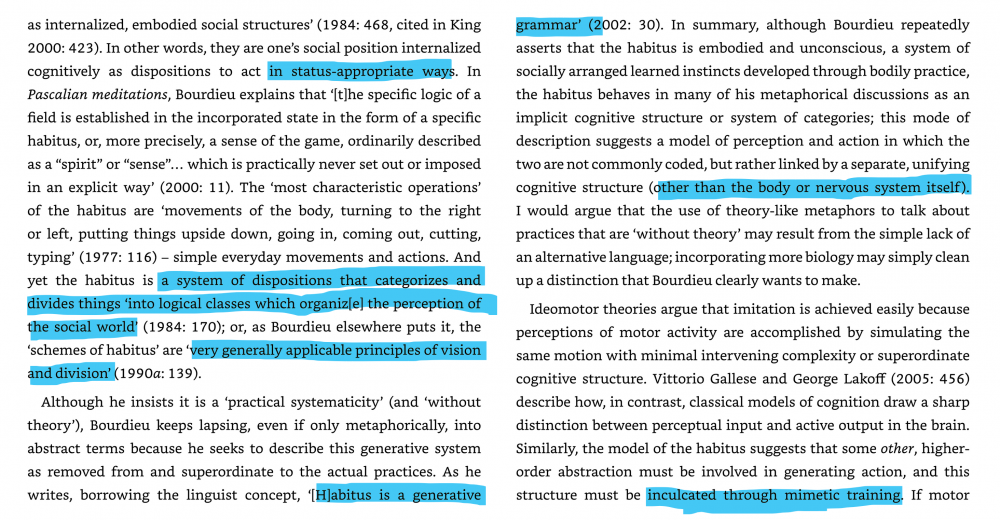
The generative habitus, likened to the painters style, a person's handwriting, a way of being of a class of people, helps explain the transmission of aspects of an art not contained in physical technical imitation:
Capoeira's malicia is compared to Bourdieu's habitus, an all pervading vision of the subject and the world, positioning and conditioning the art. This is not too different than the acquisition of embodied principles of Muay Thai in the kaimuay, aspects such as auton, ning, ruup, haut, various rhythms and dispositions that communicate the ethos of the art, and even more particularly the ethos of a gym:
-
 1
1
-
-
One fundamental note, it occurs to me to add, is that when we see and feel the wobble our immediate thought is that something is wrong. And there are good reasons for this. It usually means that something is amiss, some piece of balance, or a placement of weight, or even timing. Sure. But, there is another thing going on when the wobble presents itself. It means that the student, the fighter, is risking the wobble, feeling and exposing themselves to the metastability, and this exposure may very well be the PATH to a refined sense of balance and (meta)stability. Yes, the wobble may be corrected by direction. Put your foot here, be sure to keep your hand up...yes. But ultimately it is about the body engaging with the very instability itself, and finding/feeling the unique ways in which it can ride the line of the wobble. Just as a skateboarder or a surfer does.
-
Much has been made of the role of play in traditional Thai pedagogy. Instead of more rigidly define skills taught mechanically, with precision, a great deal of Muay Thai in Thailand is developed in group experiences, through play and imitation. I've written about this a bit in these two articles:
1. The Slow Cook versus the Hack – Thailand Muay Thai Development
2. Precision – A Basic Motivation Mistake in Some Western Training
And relatedly, Sylvie and I have talked about flow state in our Muay Thai Bones podcast, episode #2
This post is about metastable states, and the wobble. You can read the more complete quote from an essay on Simondon, sited at the bottom of this post, but this section below presents a beautifully simple illustration of what a metastable state is. A wobbling bowling pin. It is nether falling, nor stably at rest. It is neither, and in a sense, both. The thread linked at bottom is about Brain Criticality, and the theory that the human brain pursues and exists upon a line that rides between phases, a line of criticality, which is not that different than the metastability of a bowling pin mid-wobble. And, while a bowling pin will not wobble any important length of time, a living system, the human brain, may have evolved to ride on this line of wobble.
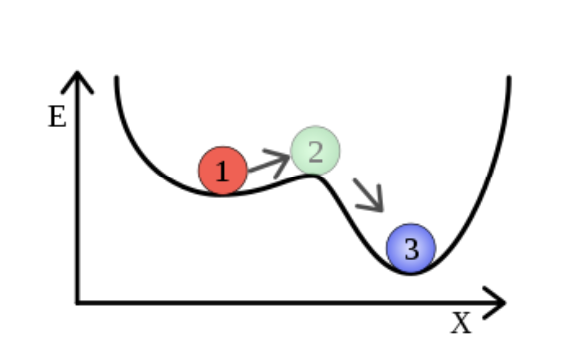
This is when we get to deeper philosophical ideas, and more practical ideas in skill development. A reason why a system might want to ride the wobble, and not lay in an energy state of stability is that a sunken state of rigidity cannot take in events outside of its structure and framework. A system that has wobble can more readily incorporate unanticipated information, is more readily able to adapt. Buddhism tells us that life is suffering, and that nothing can stay what it is. Everything is in a line of decay. What is this other than the wobble of existence? The critical line of dissolution. The legendary Thai 19th century monk Somdet Doh likened living to falling from a very tall tree. If theories about brain criticality are correct, no matter how simplified you make your life, or complex, the brain will find a critical line in it, like the surfer's line in a wave. I suspect that this is the reason for so much simplification in Buddhistic practices of meditation. They simply experience, strip it down to such bare elements, in order to expose the Nature of that wave, the way the brain will find that line, that wobble. When life (and experience) becomes much more complex, it's much easier to blame (or credit) our states on dramatic moments or events...but, the same line of criticality is likely at work, we're taking the same line on the same kind of wave.
This could mean in a very interesting way, that the ascension in fighting skill is a form of meditation. Meaning, it's about seeking that line, the surfer's line, on a narrowly defined wave, a wave that triggers fear, adrenaline, flight, amygdala, shame and pride, drawing on our baser instincts and social relations. The practice is full of techniques, practices, but ultimately what is being sought in that line of criticality.
Its for this reason that while the training of specifically defined, and mechanically correct skill-sets (in drills) could very well be advantageous, this isn't really the practice of what elite fighting is. It's not about being able to perform memorized patterns under great stress. Ultimately, it's about finding that line of criticality, a line that embraces the wobble, the way that a fighter can be both stably unstable, such that it can be open to a great variety of information. This is something Sylvie and I talk about as "growing eyes". You cannot grow eyes without seeking the wobble, in your training. Because its about hunting the wobble, gaining a feeling for it, there must be a degree of uncertainty, and in fact often a very high degree of uncertainty...sometimes the bowling pin will fall. The shorthand for this is play.
In this way we gain access, perhaps, to the artistic line that combat fighting realistically presents, and why we thrill when we see fighters find it.
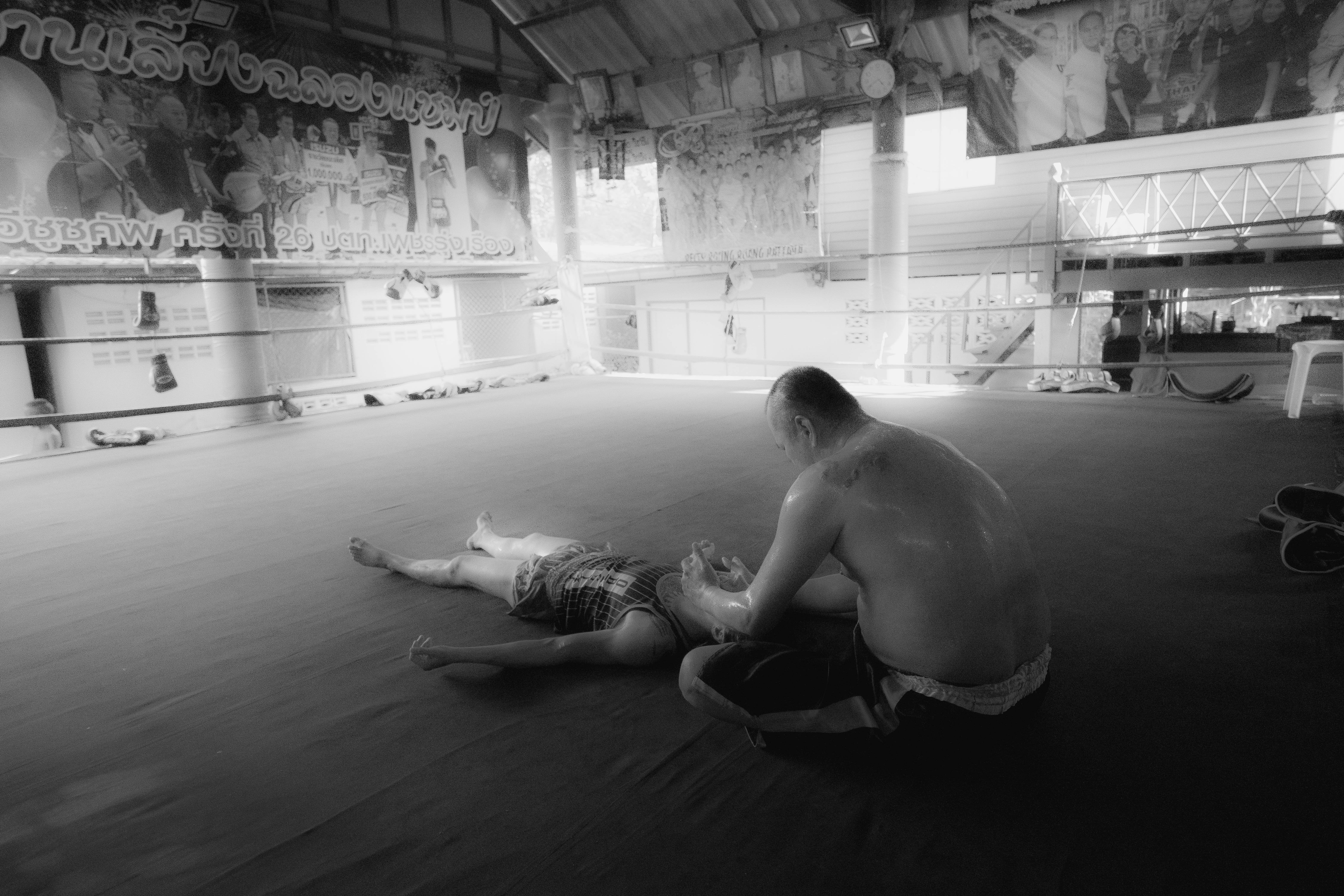
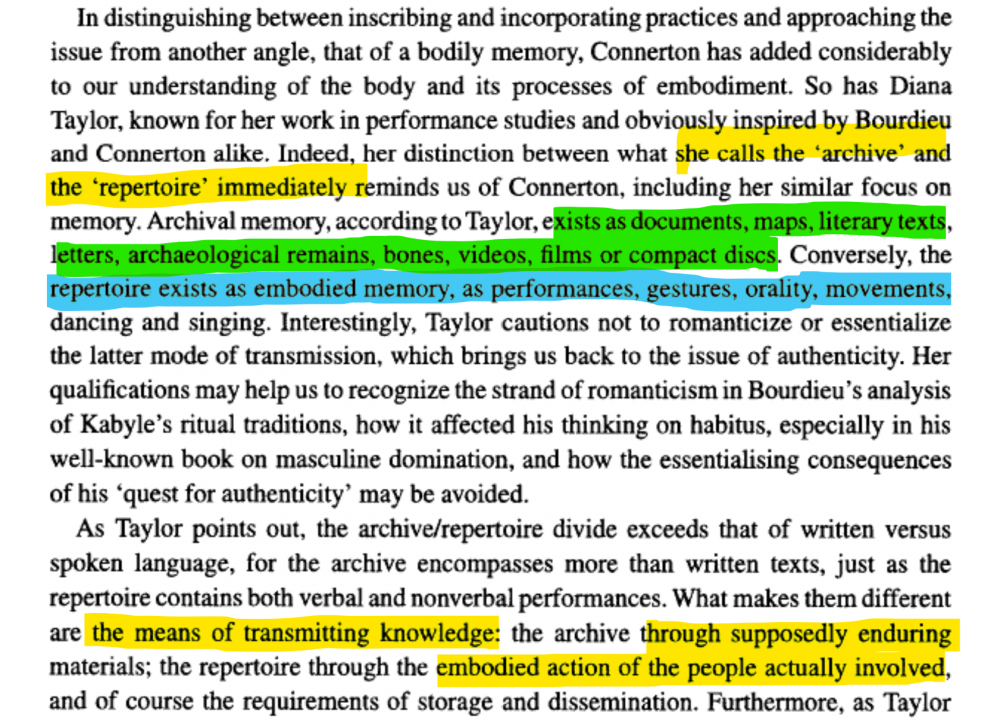
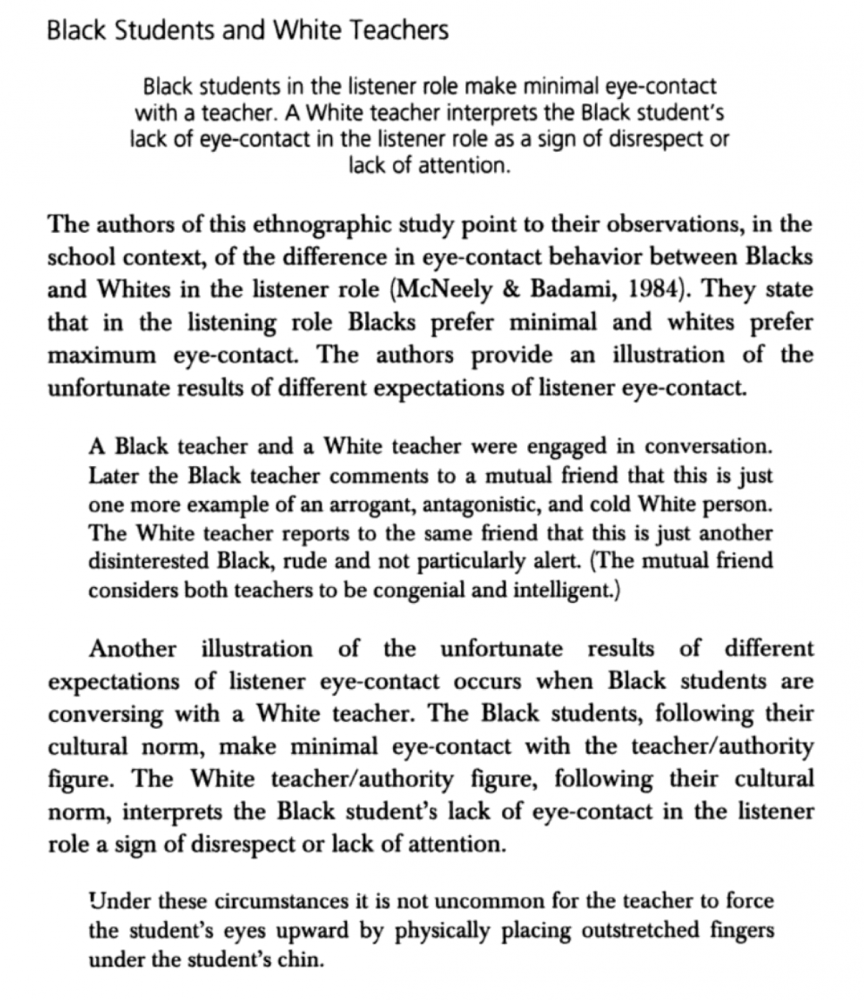
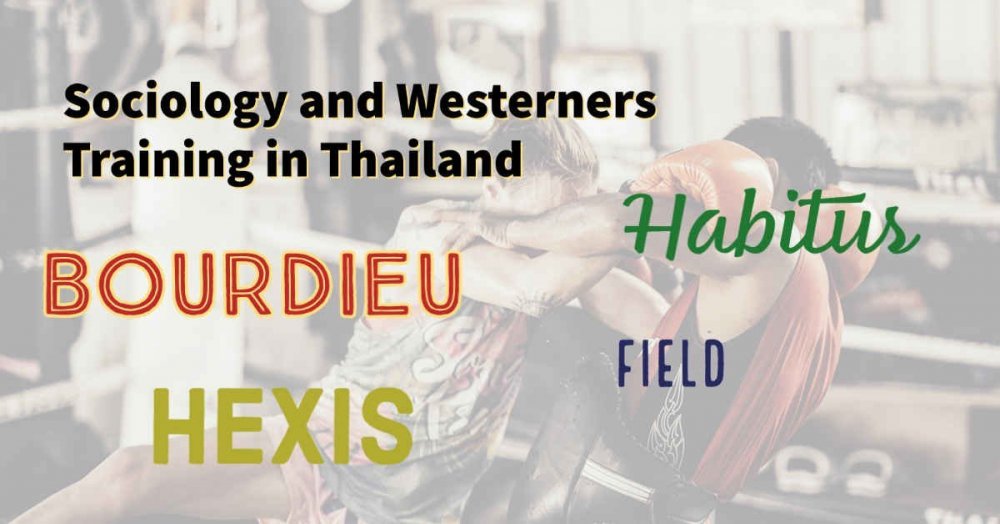
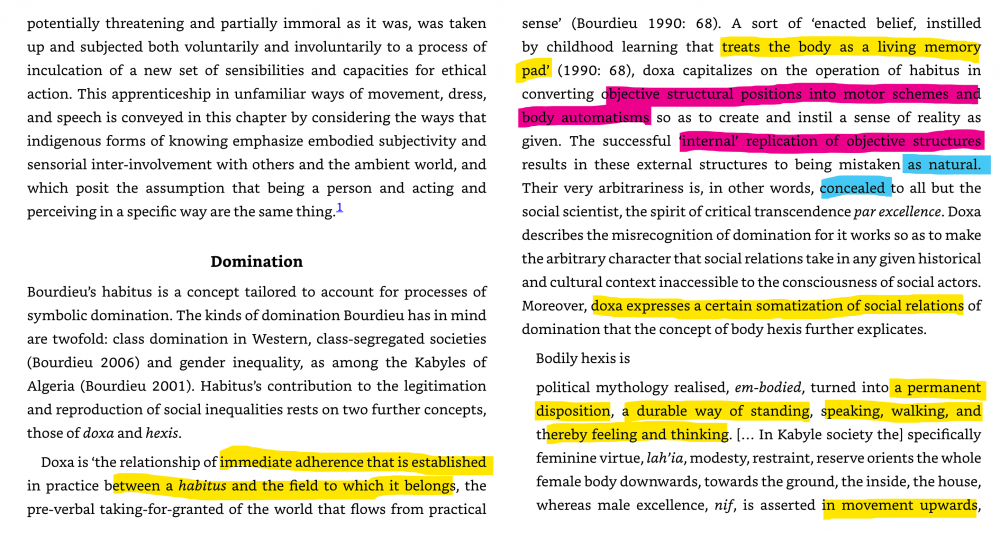
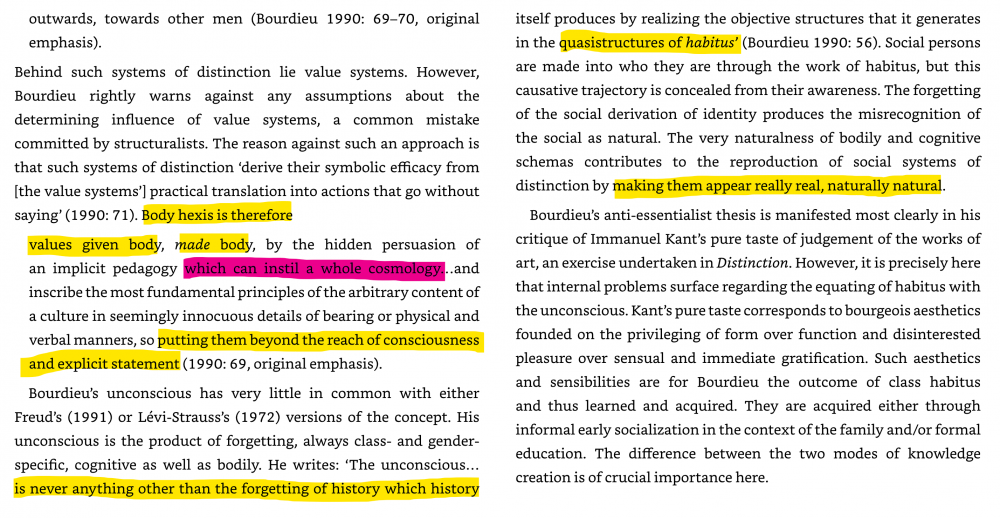
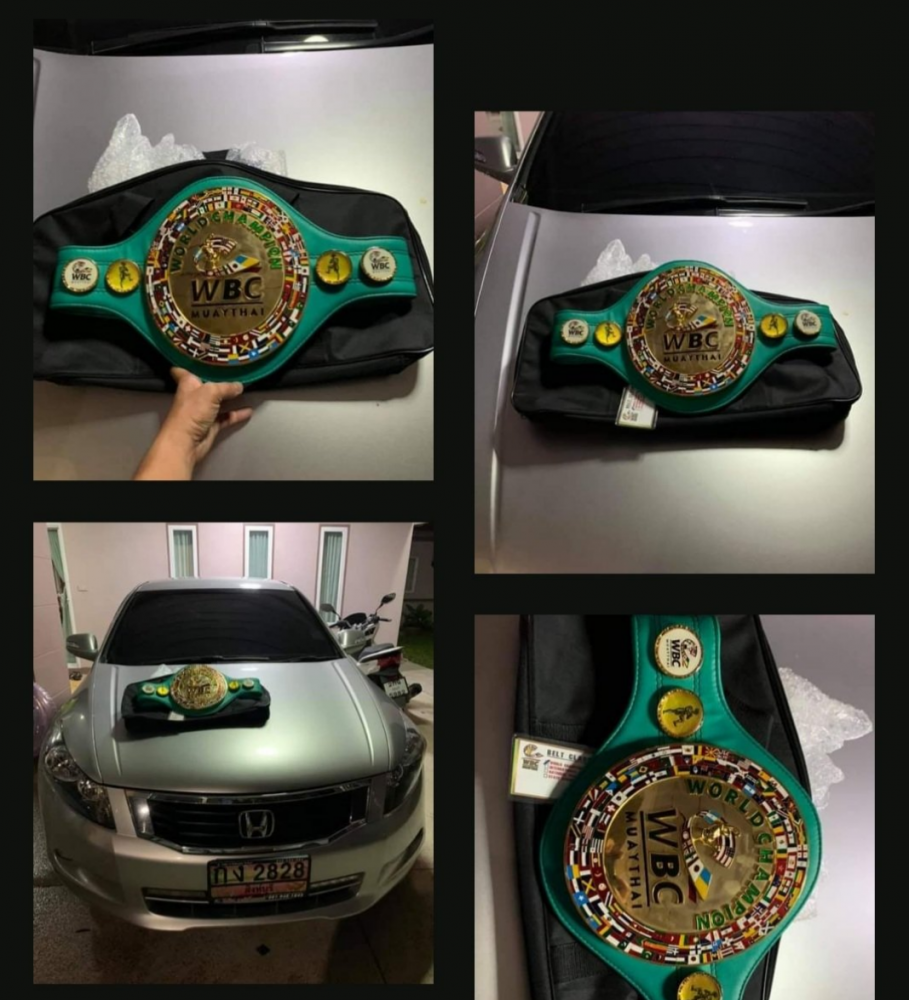
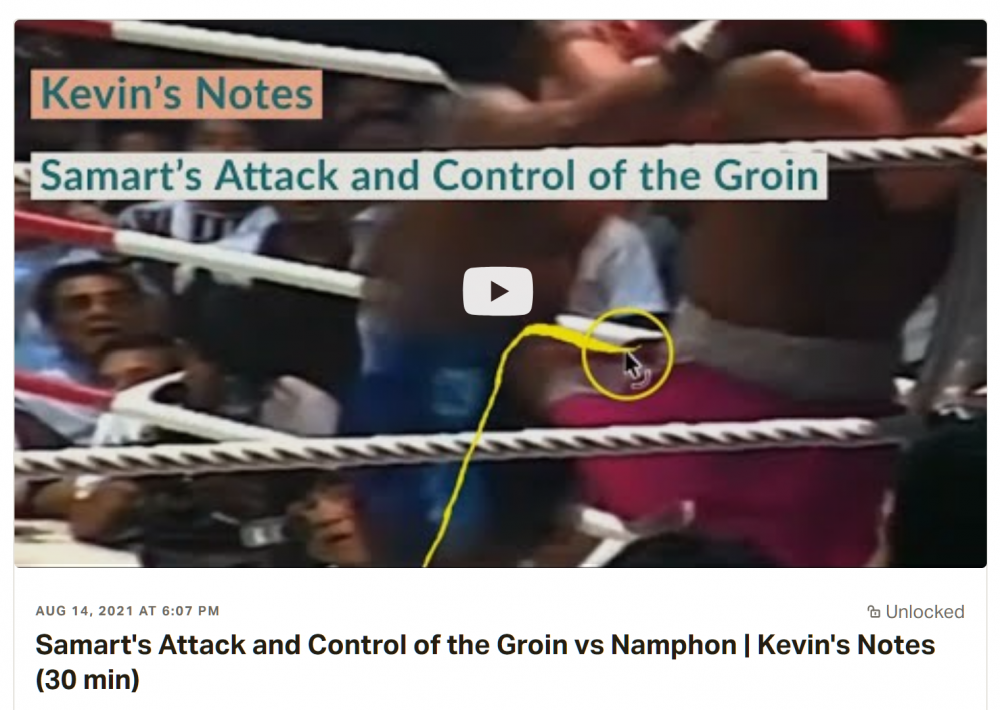
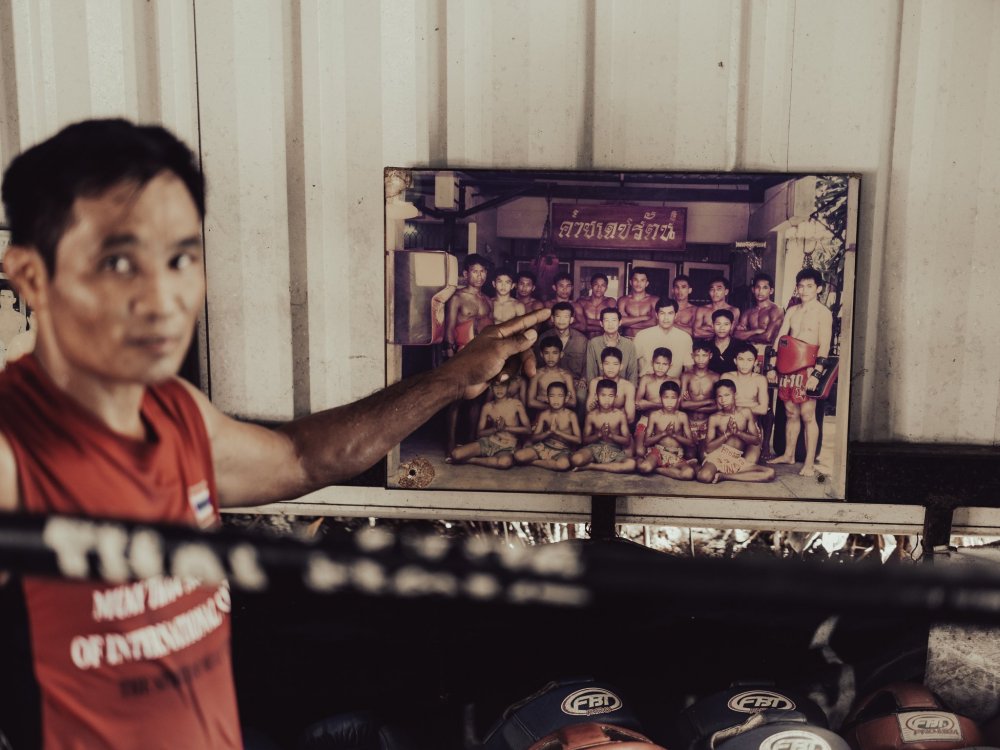
.thumb.jpg.a9c643f4e12641f7dfd8ec8f84e9bf4c.jpg)
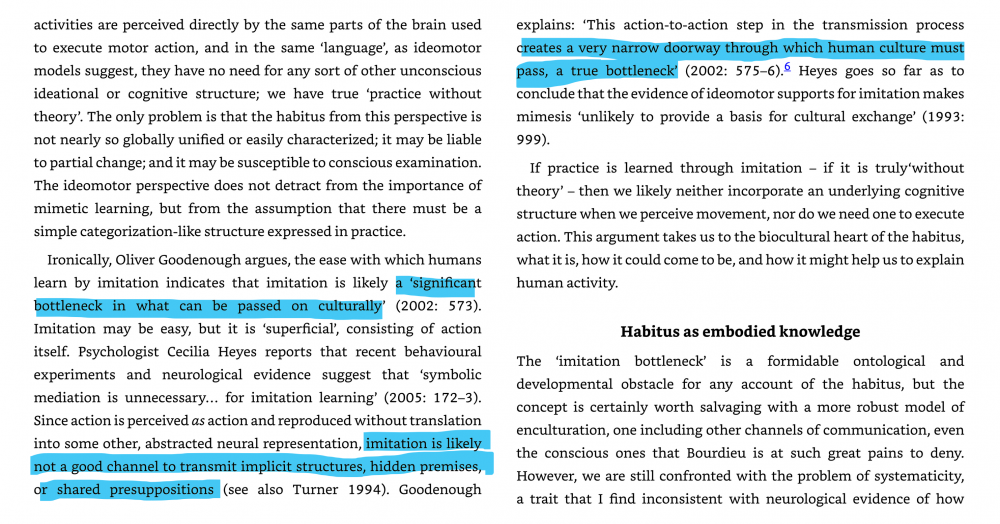
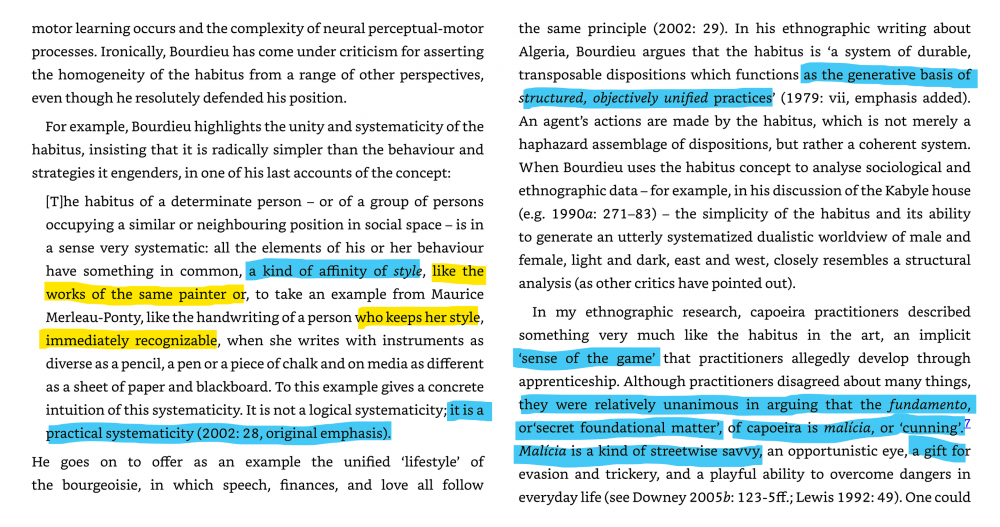
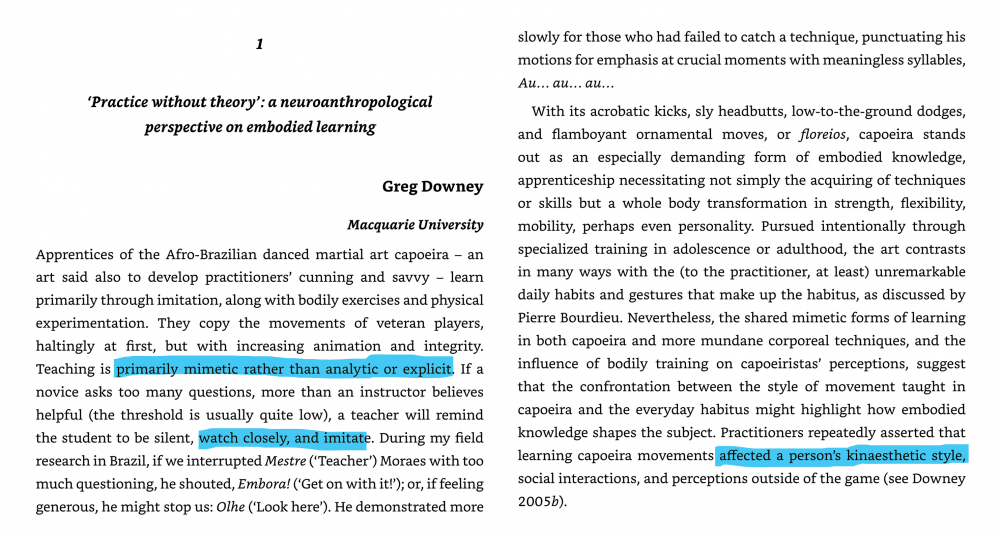
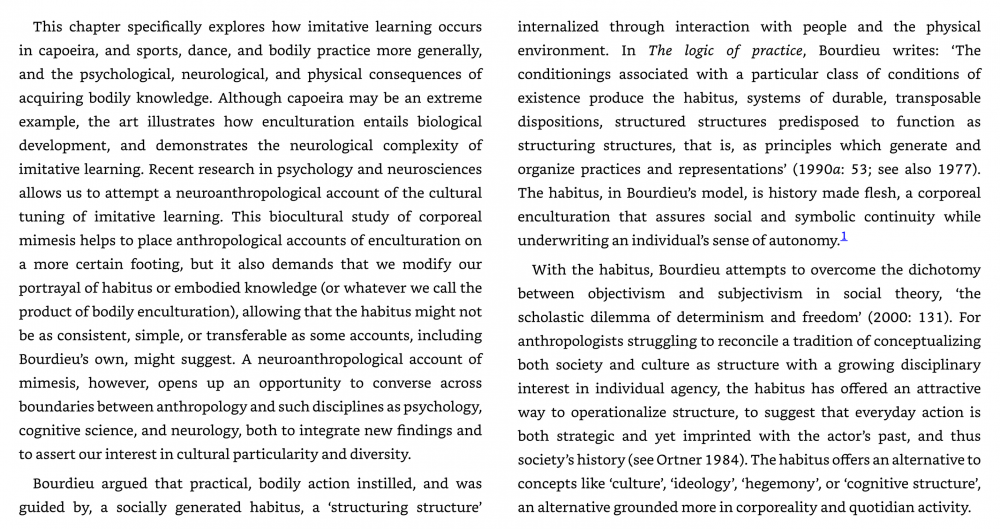
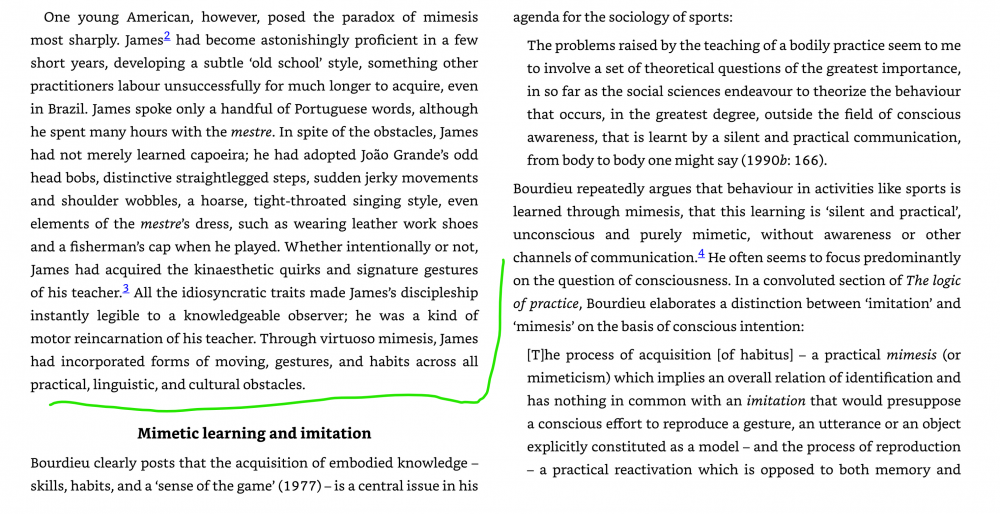
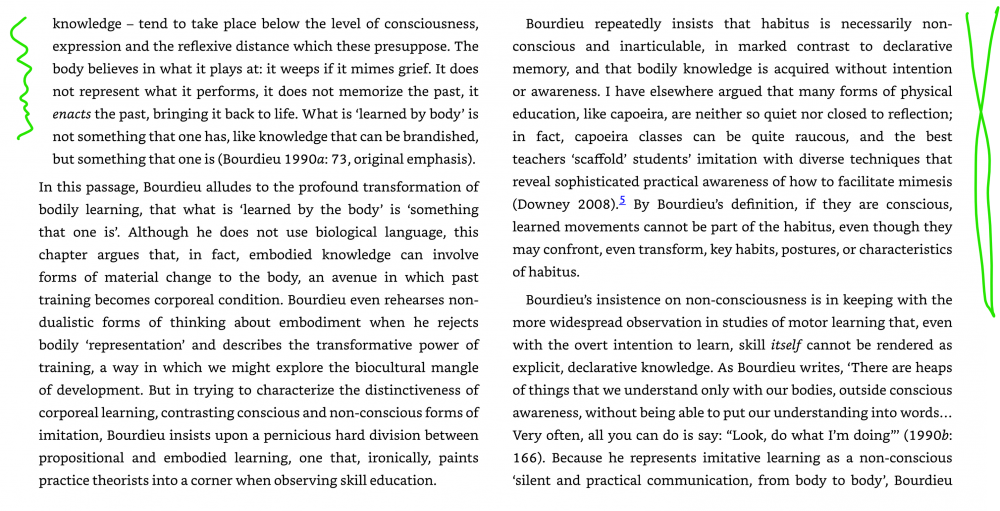
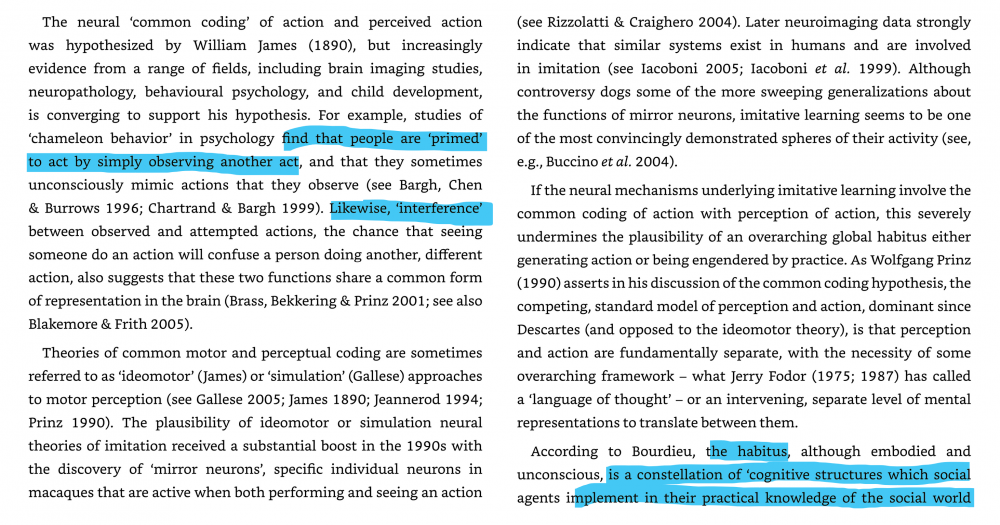
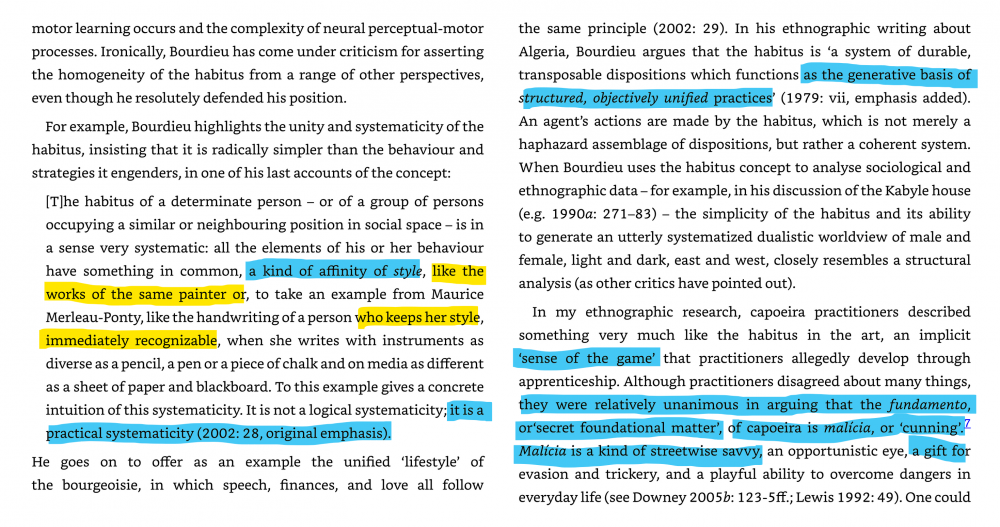
.thumb.jpg.17f9b17116dfa262cc67849f8ae08b42.jpg)

The First Female Fight In Lumpinee Stadium Breaking the Prohibition
in Open Topics - men and women - General Muay Thai Discussion and News
Posted
This is the historic very first Female Fight IN Lumpinee Stadium overcoming the half-century long prohibition. Between Nong Neuk RR GilaKhorat (Thailand) and Celest Hansen (Australia).
if the video does not play, click here